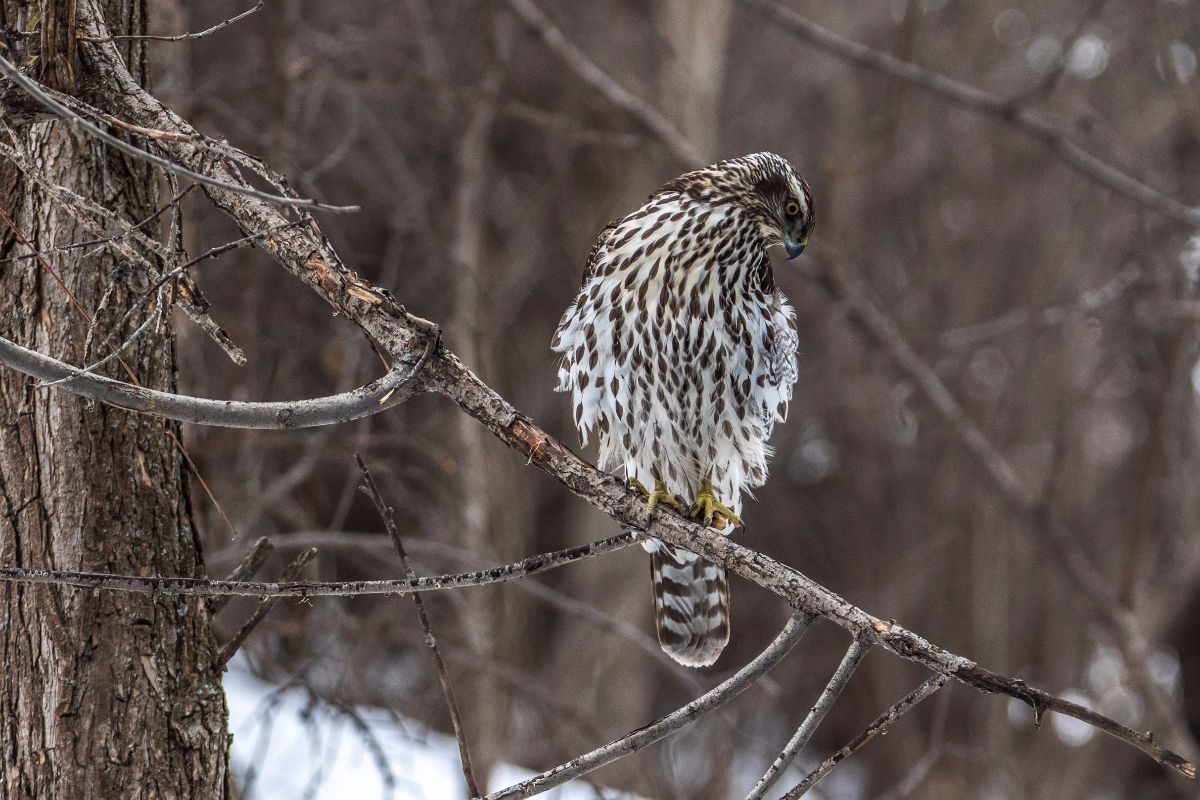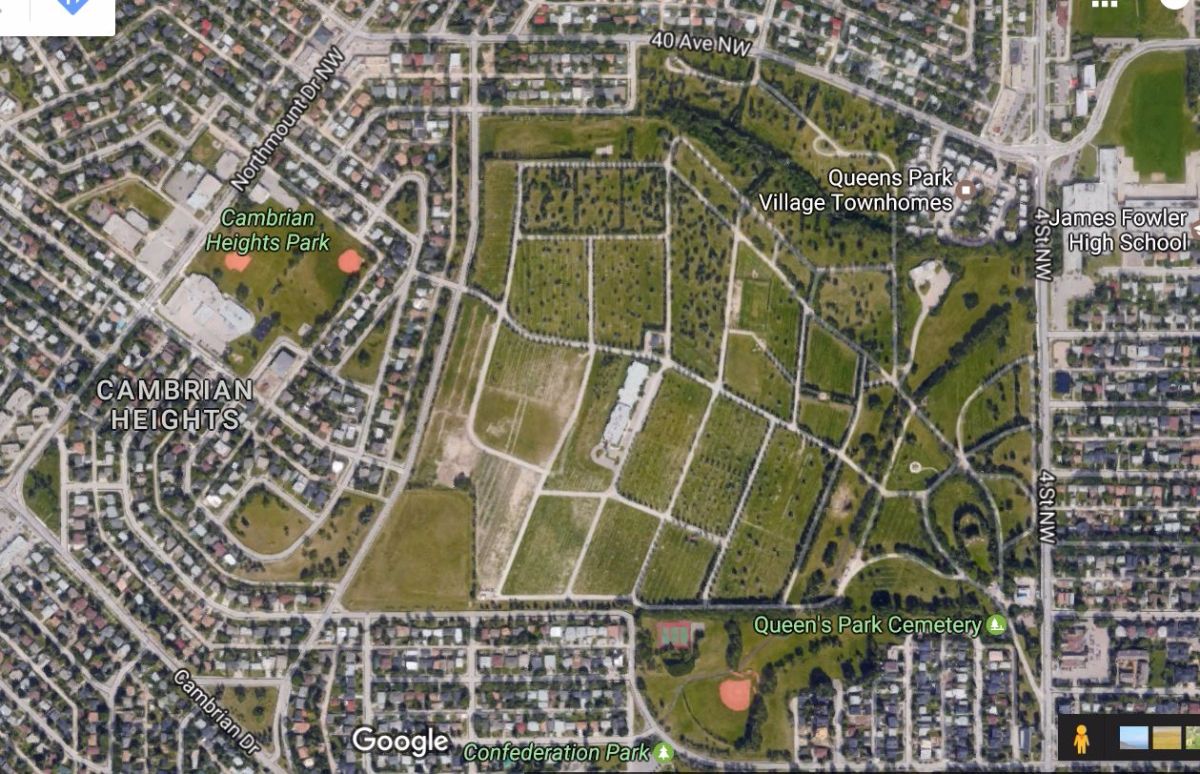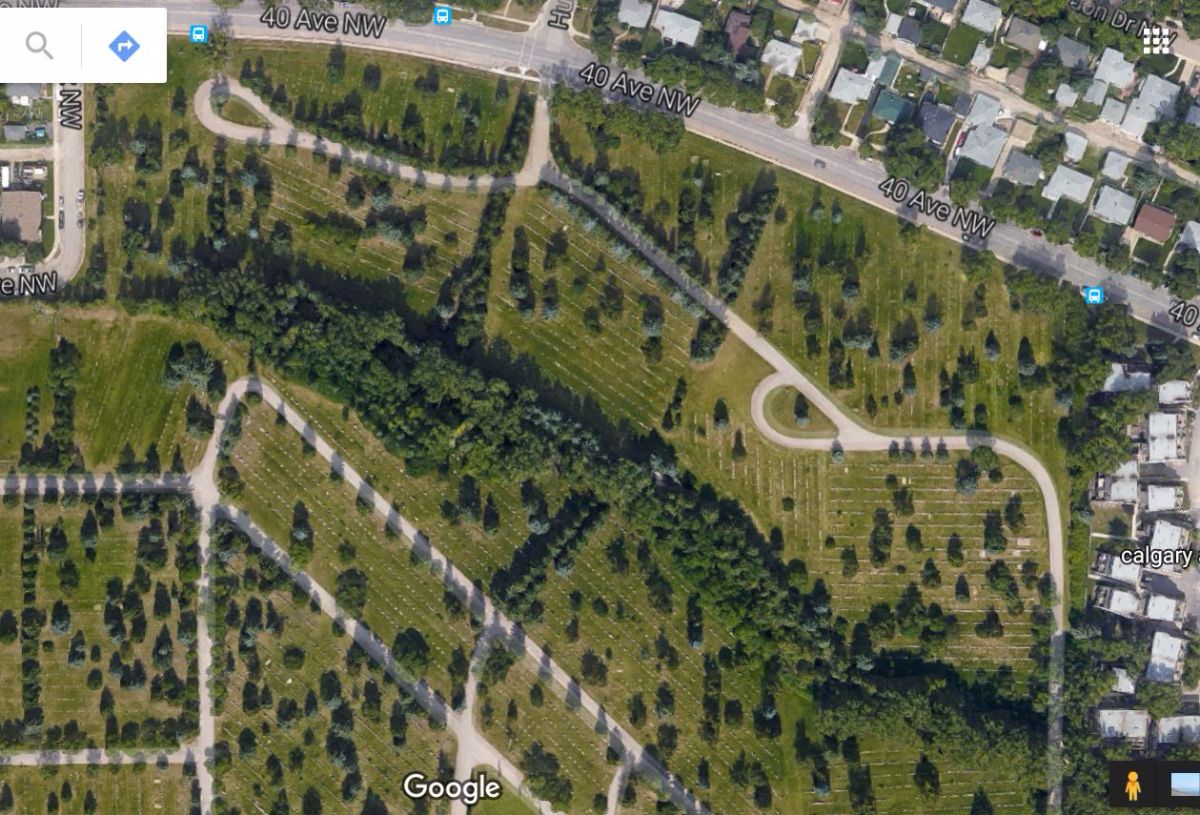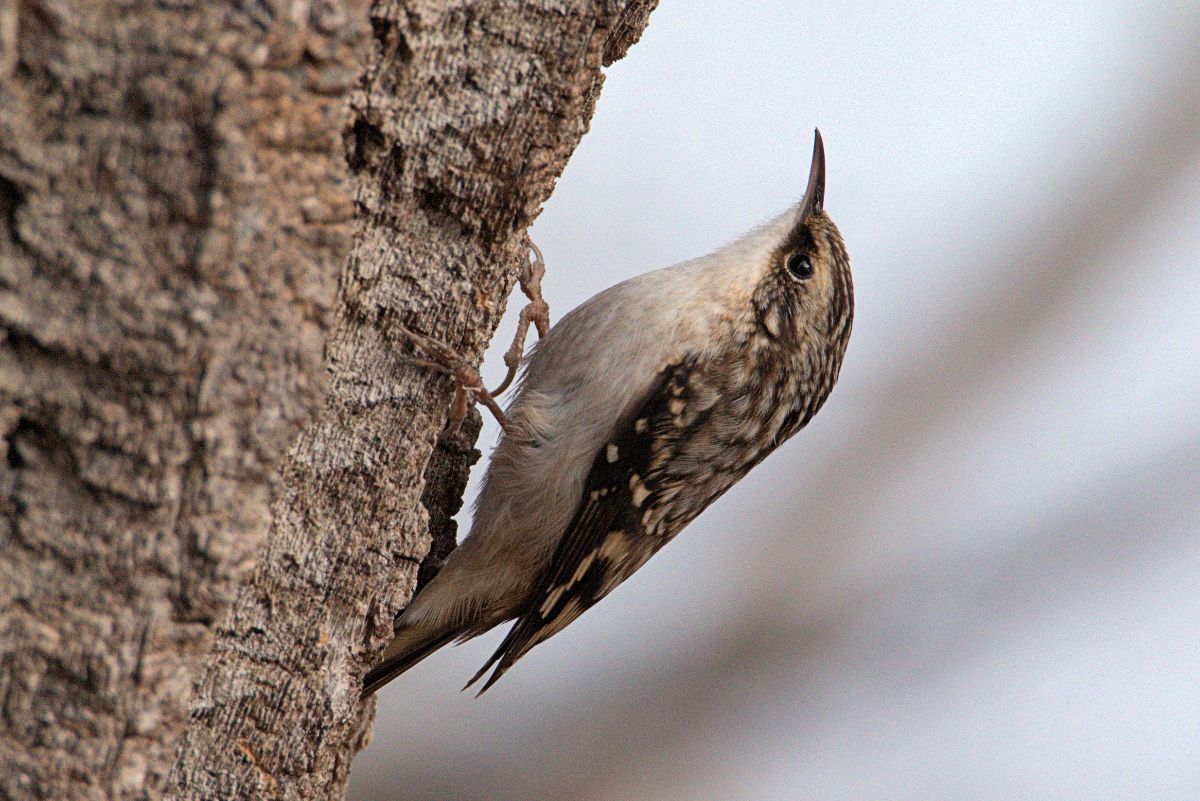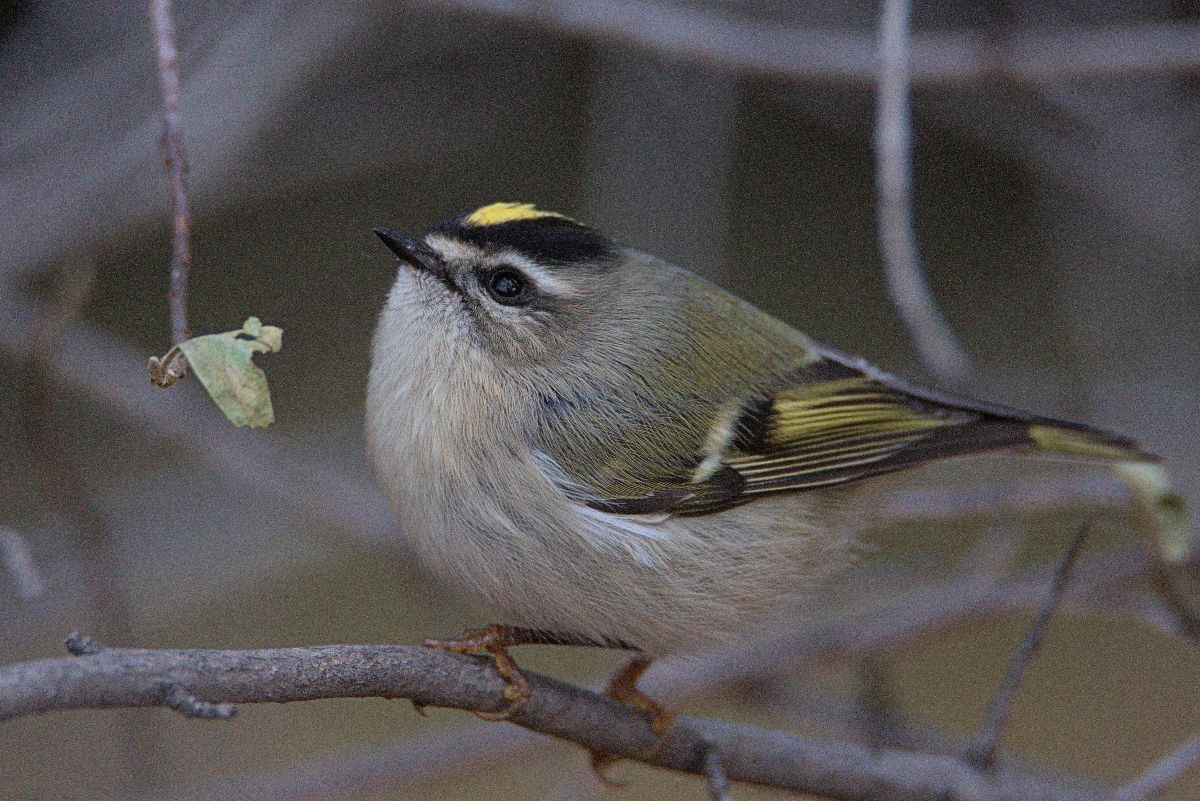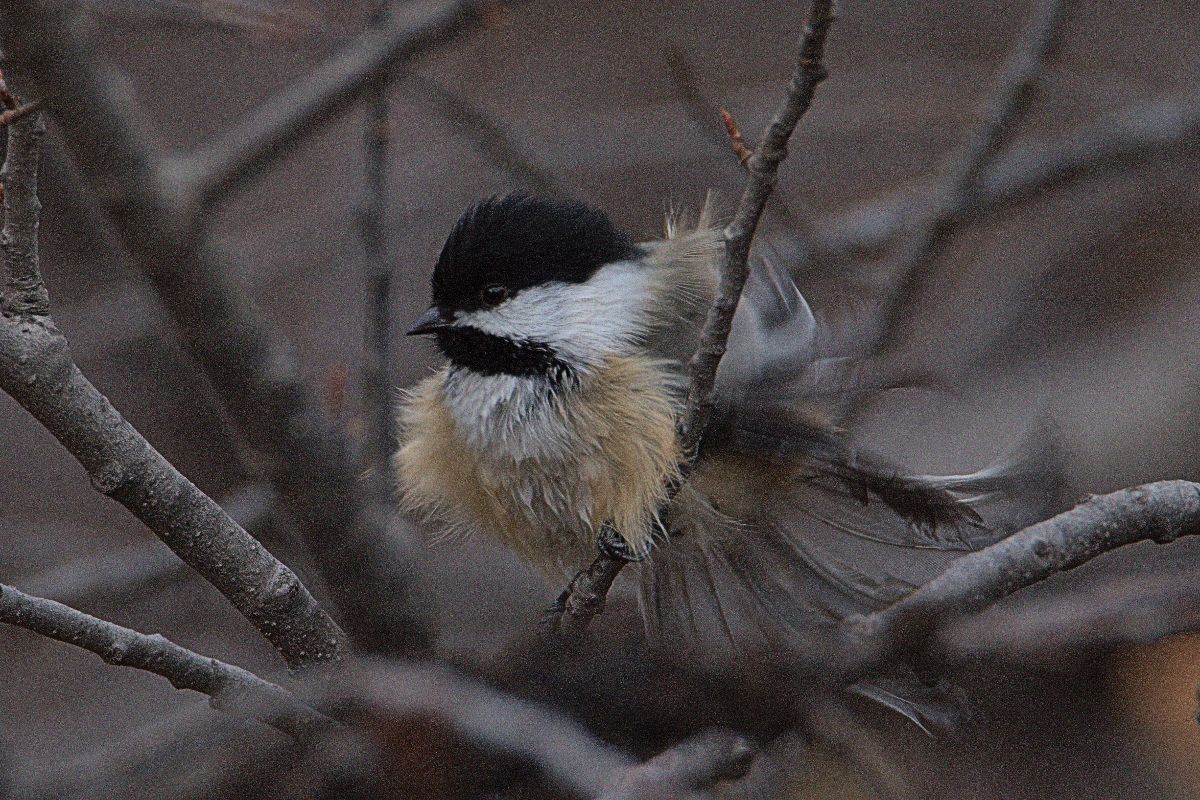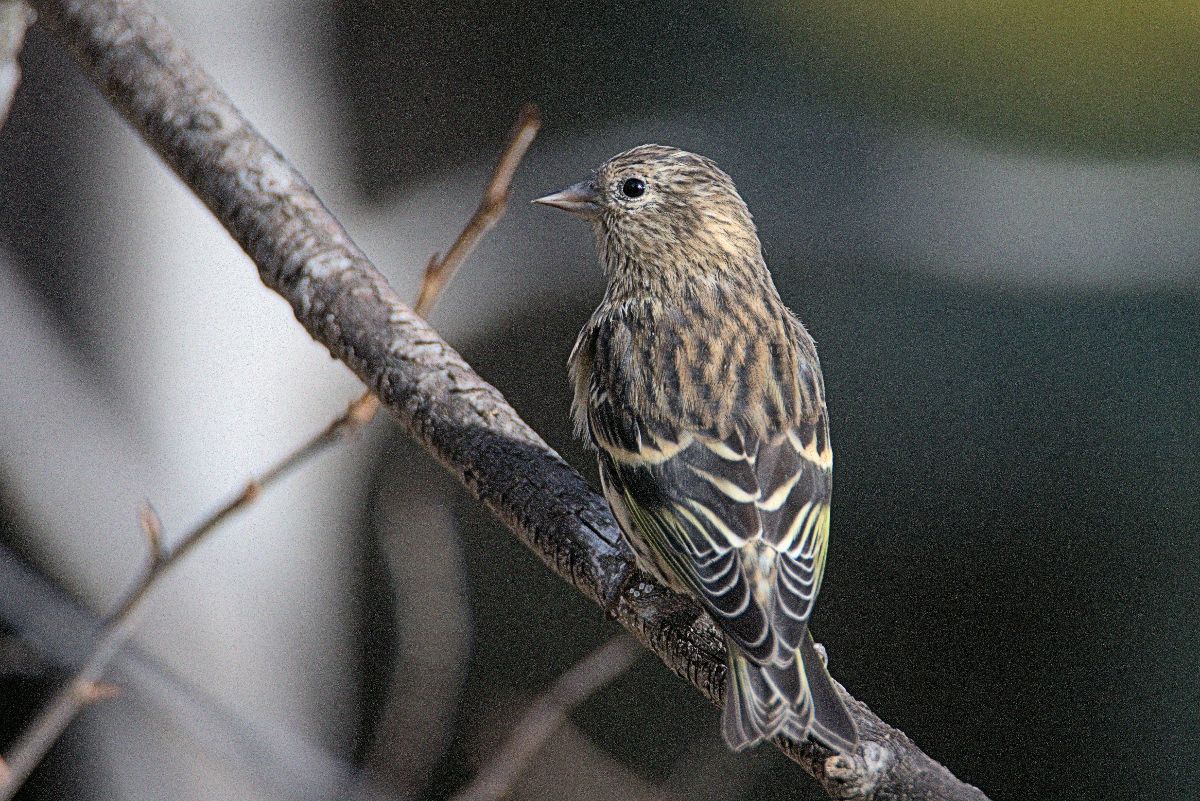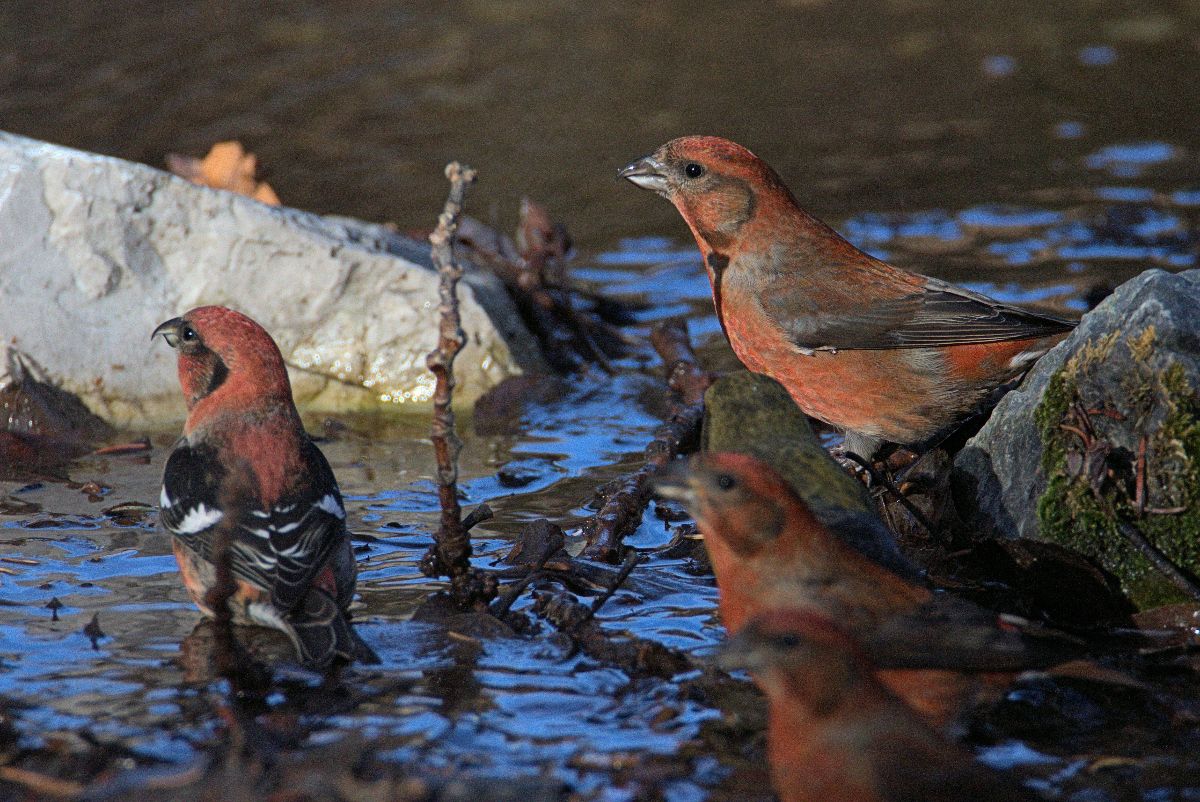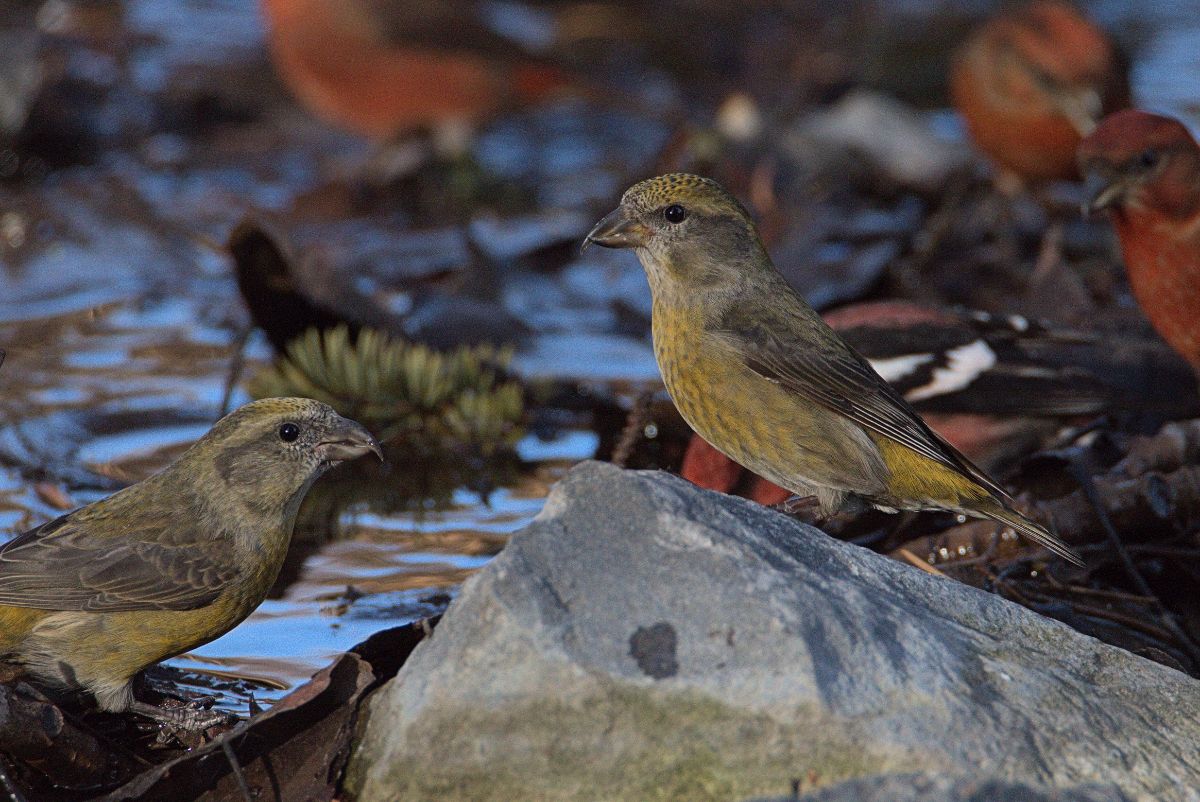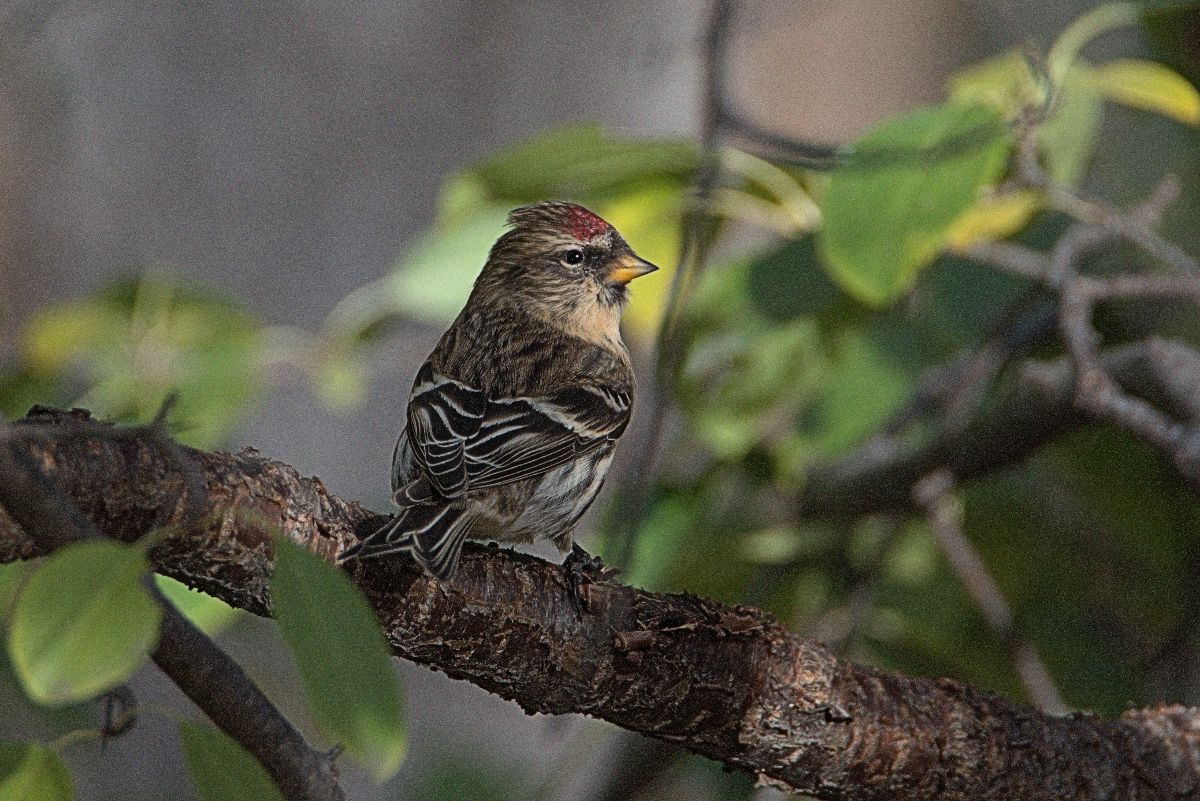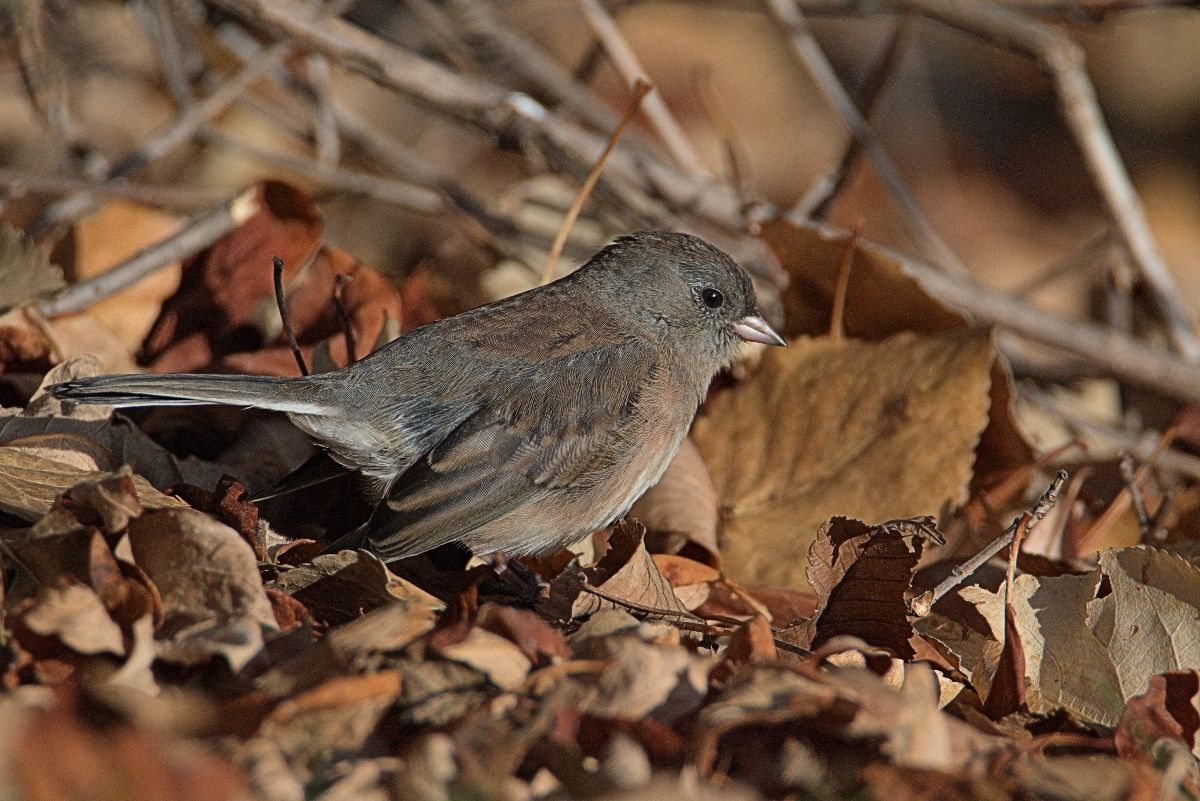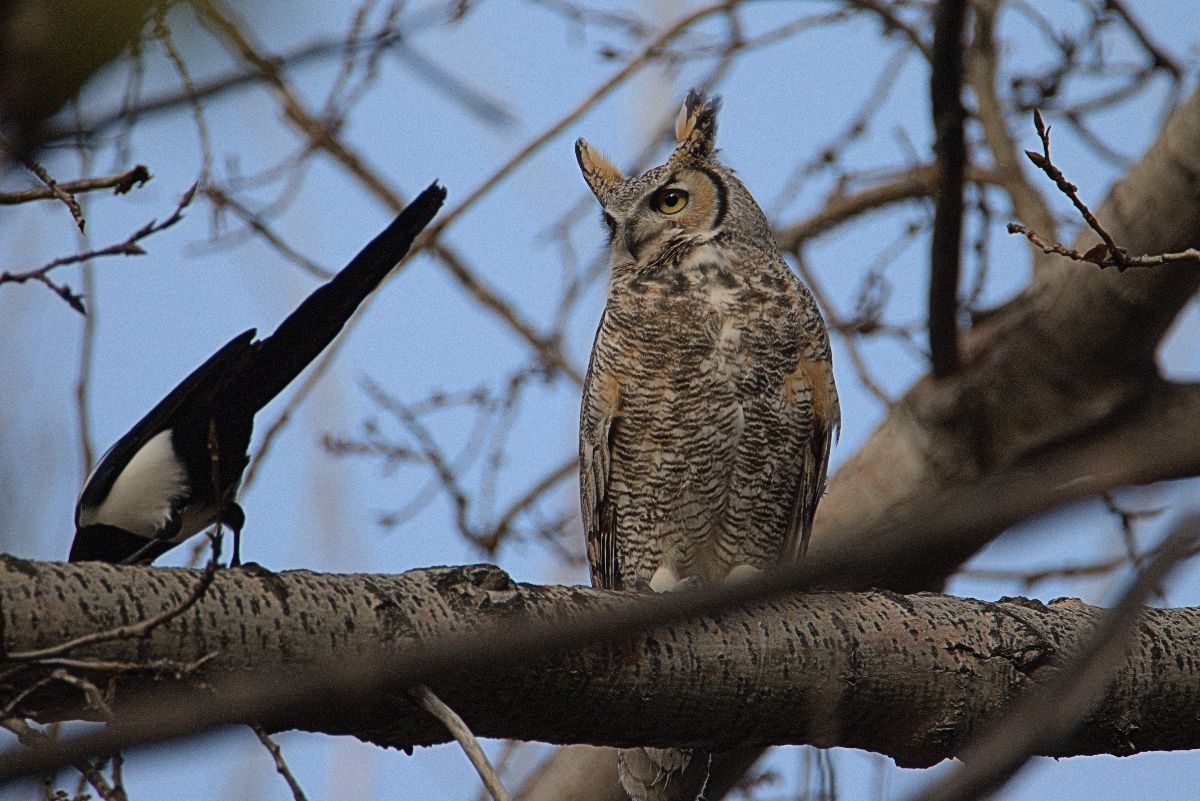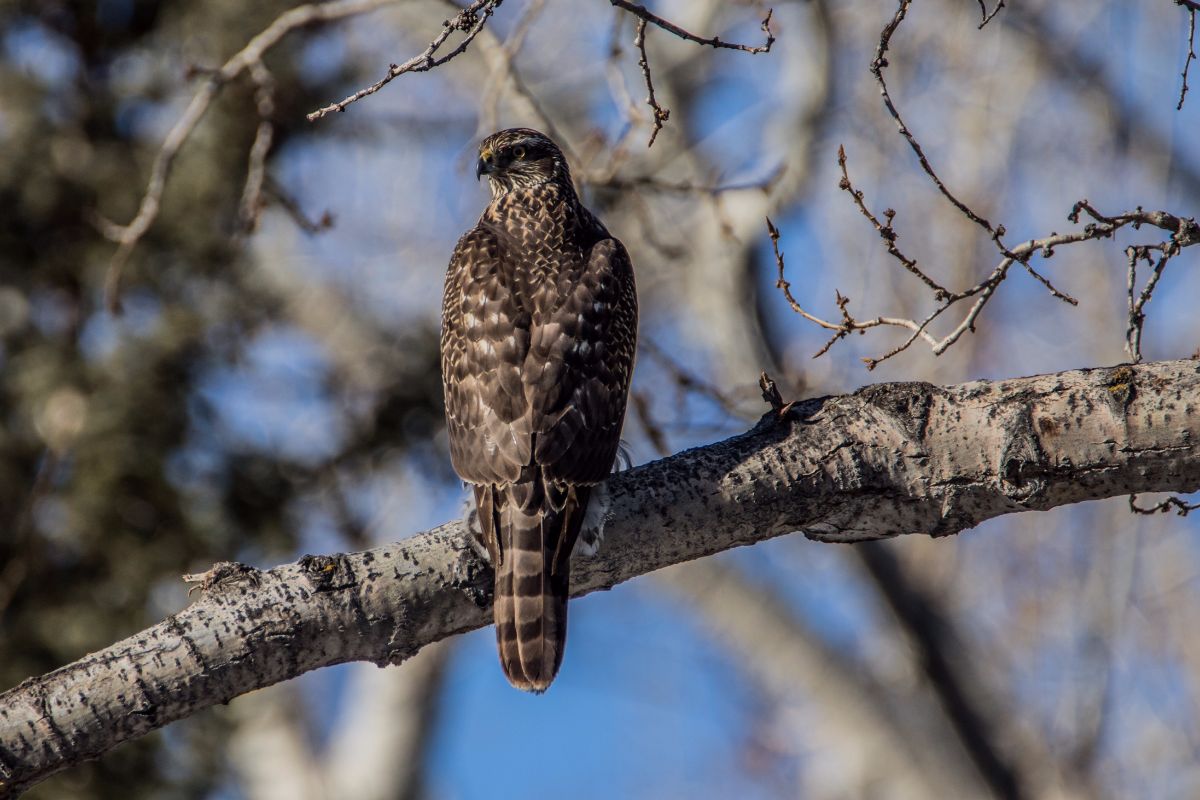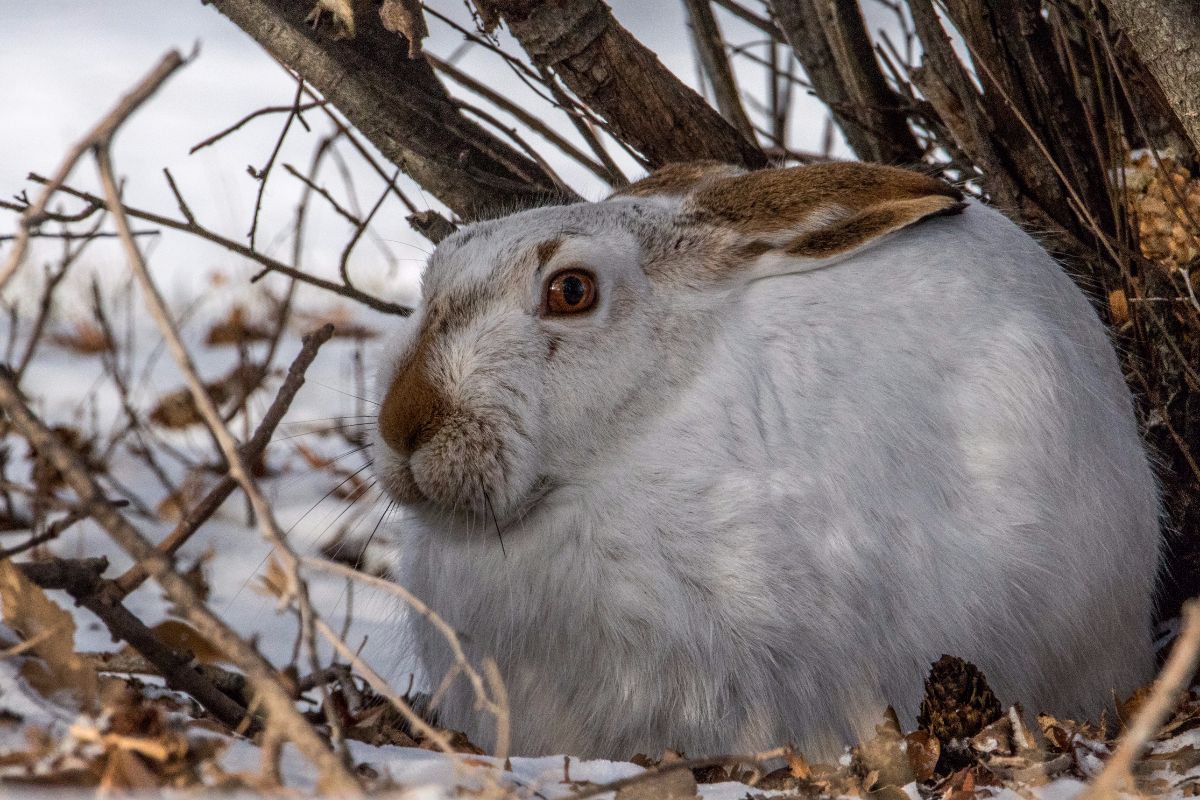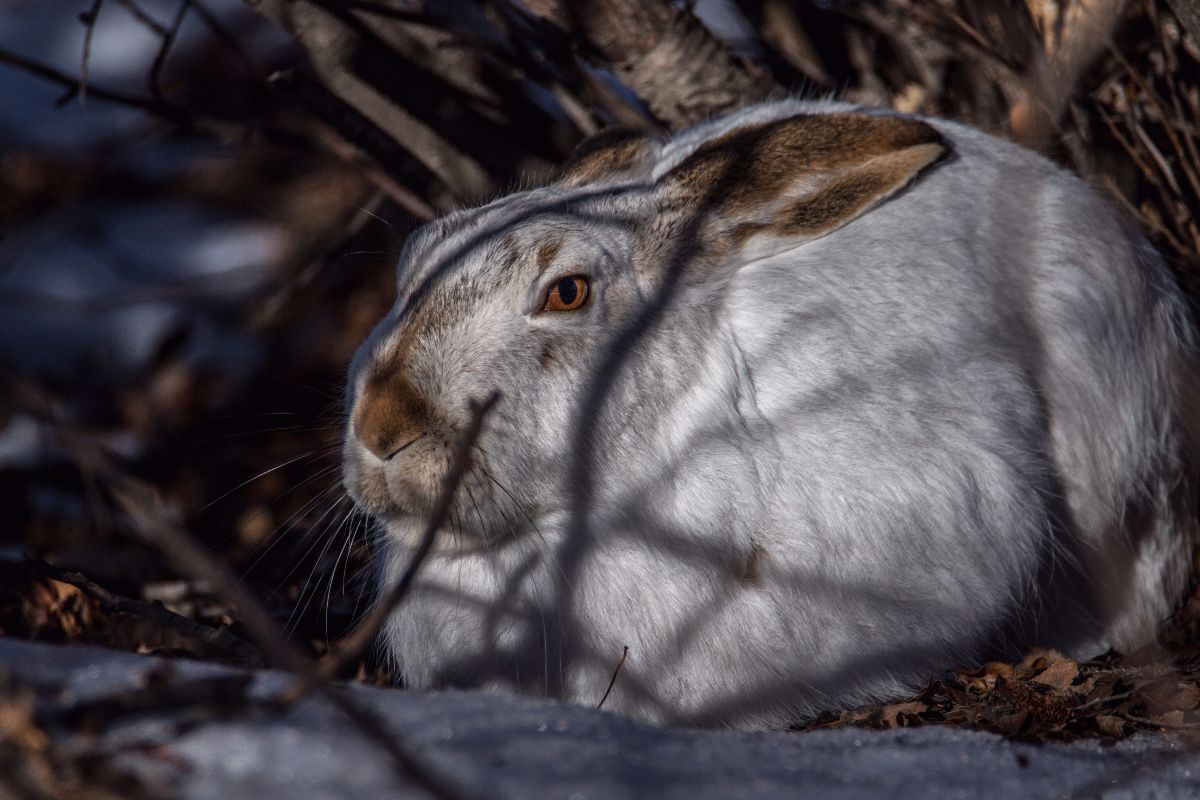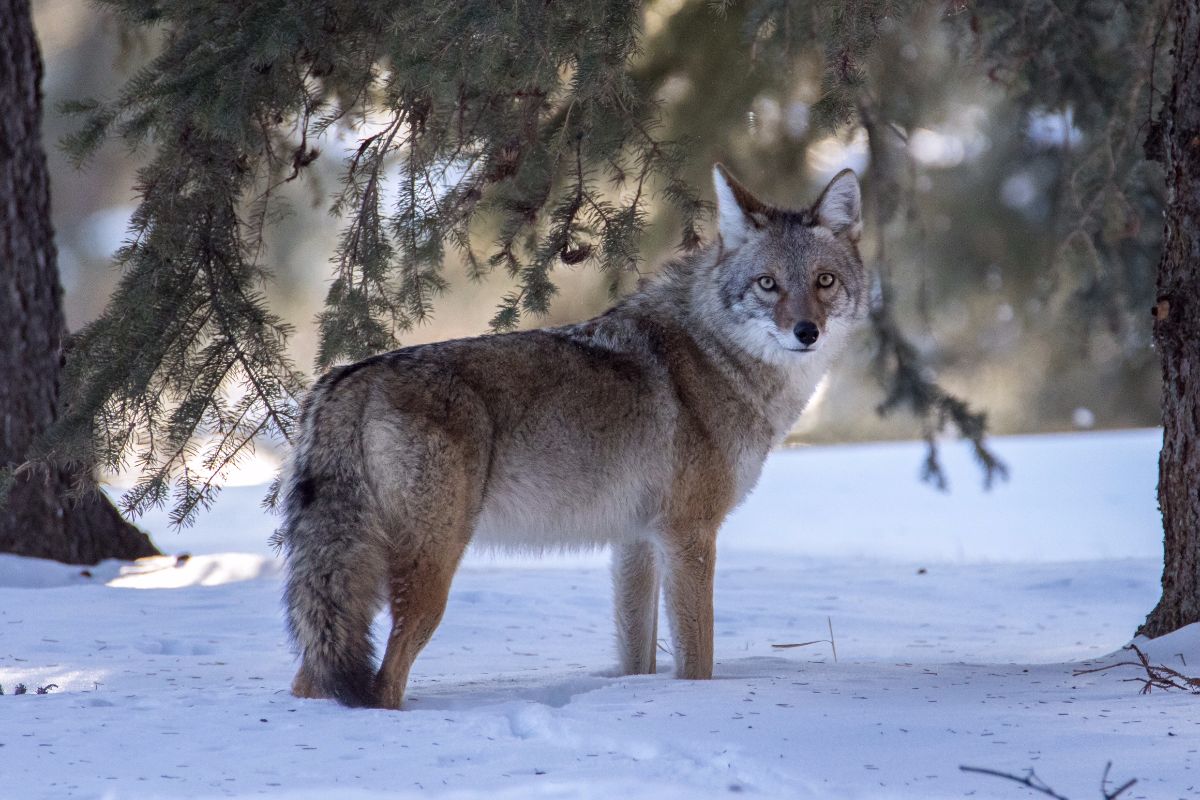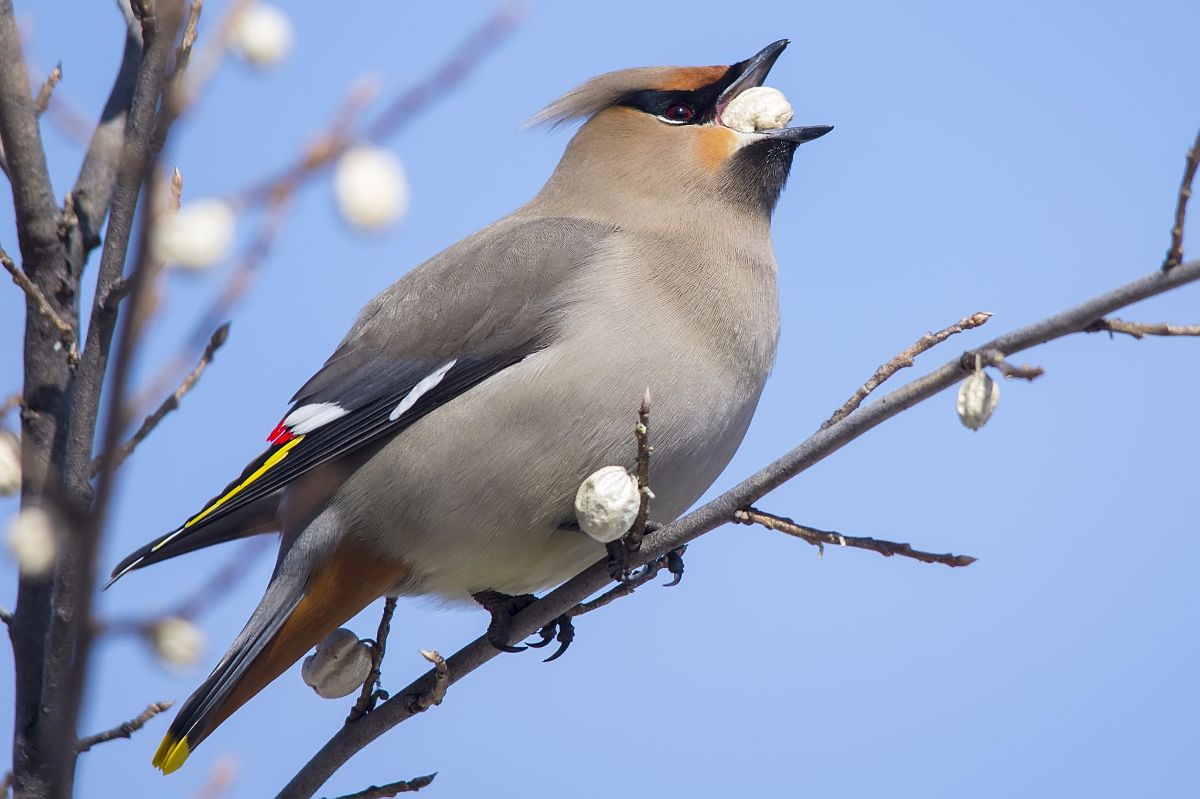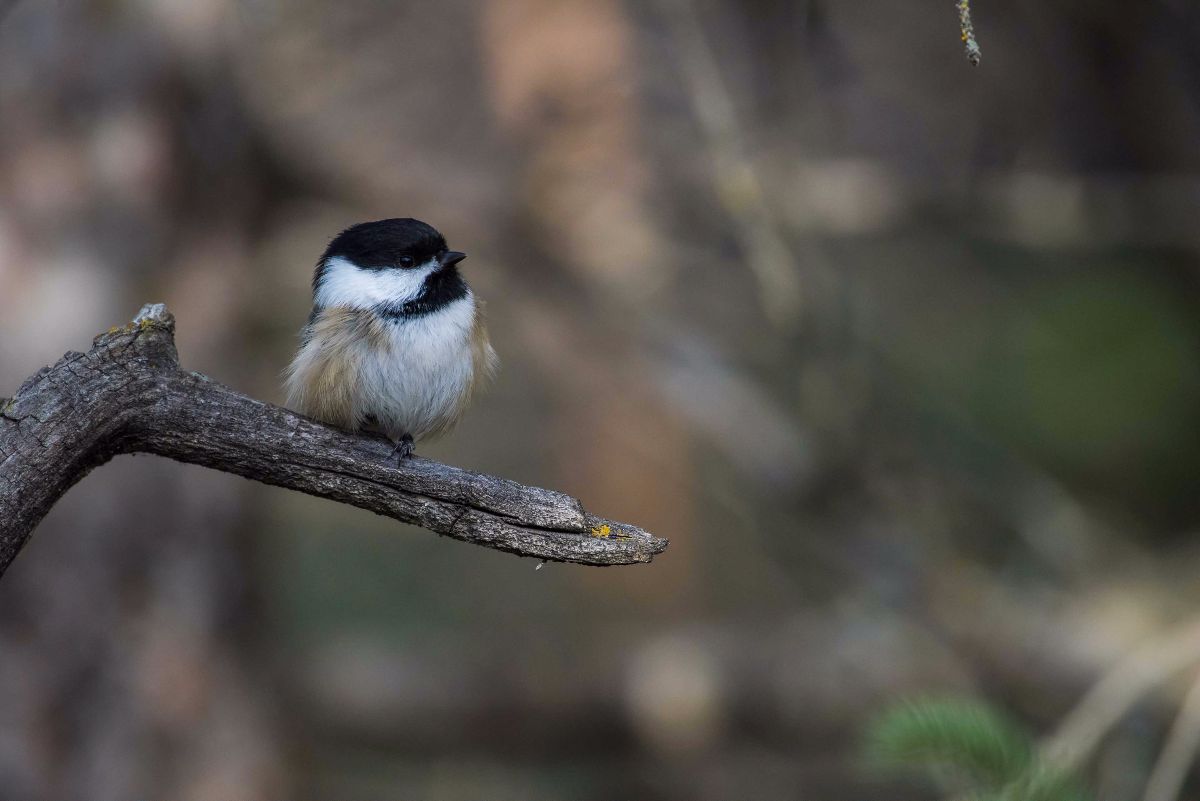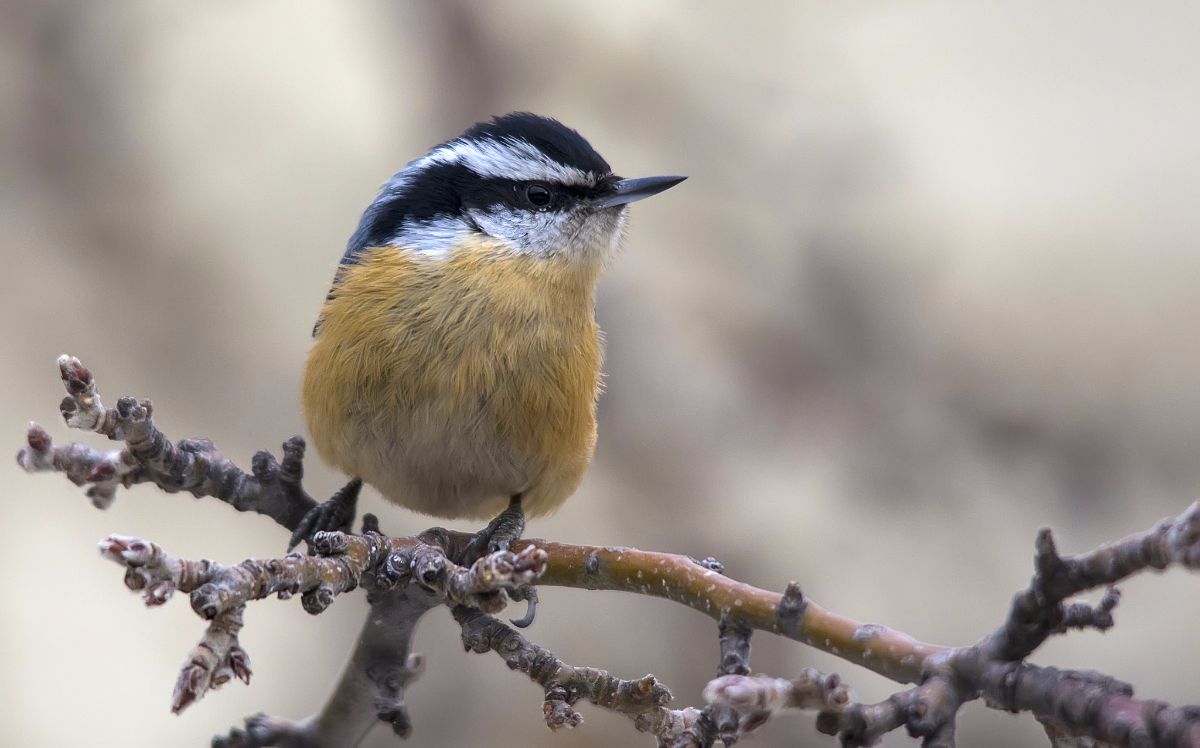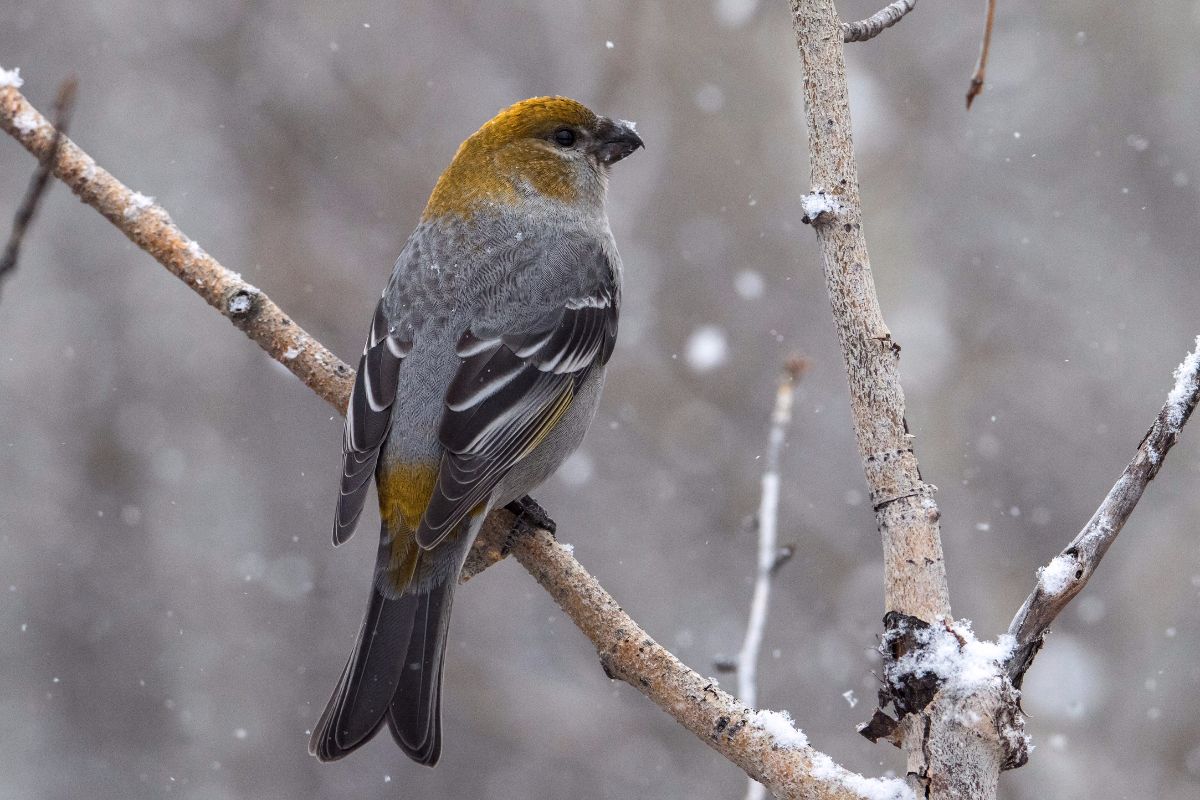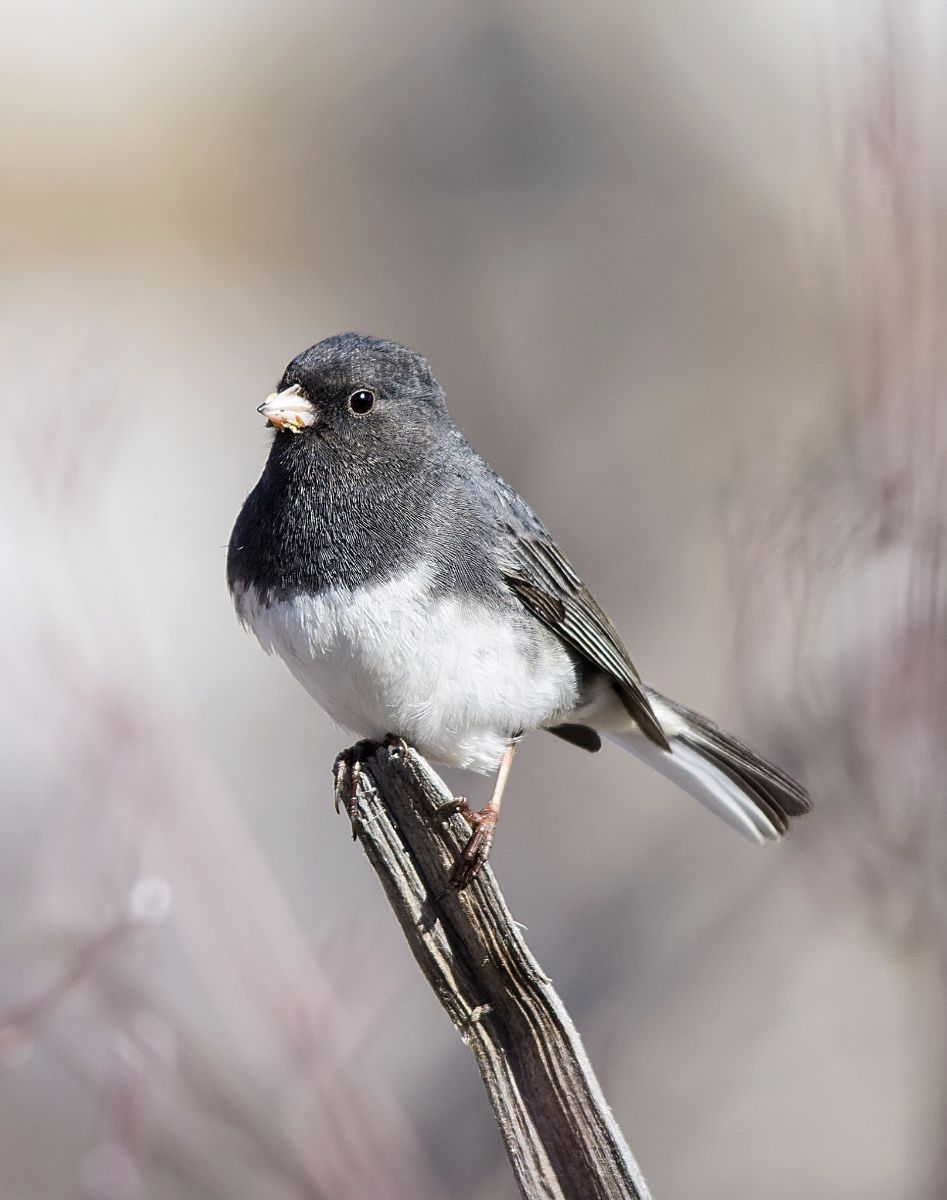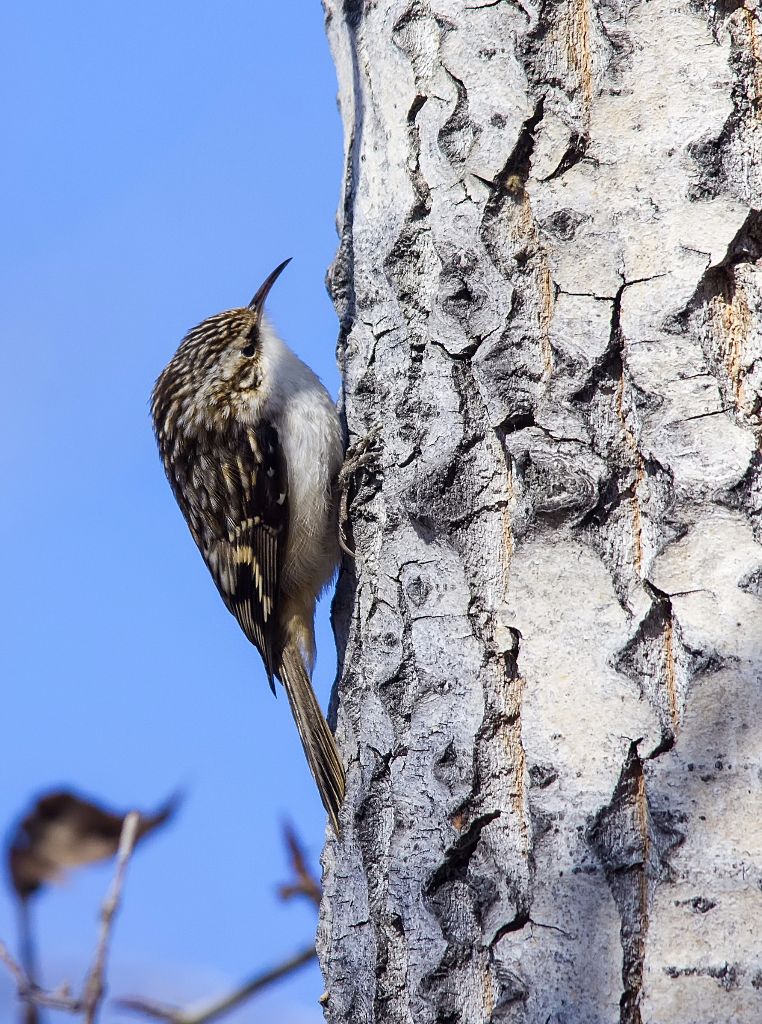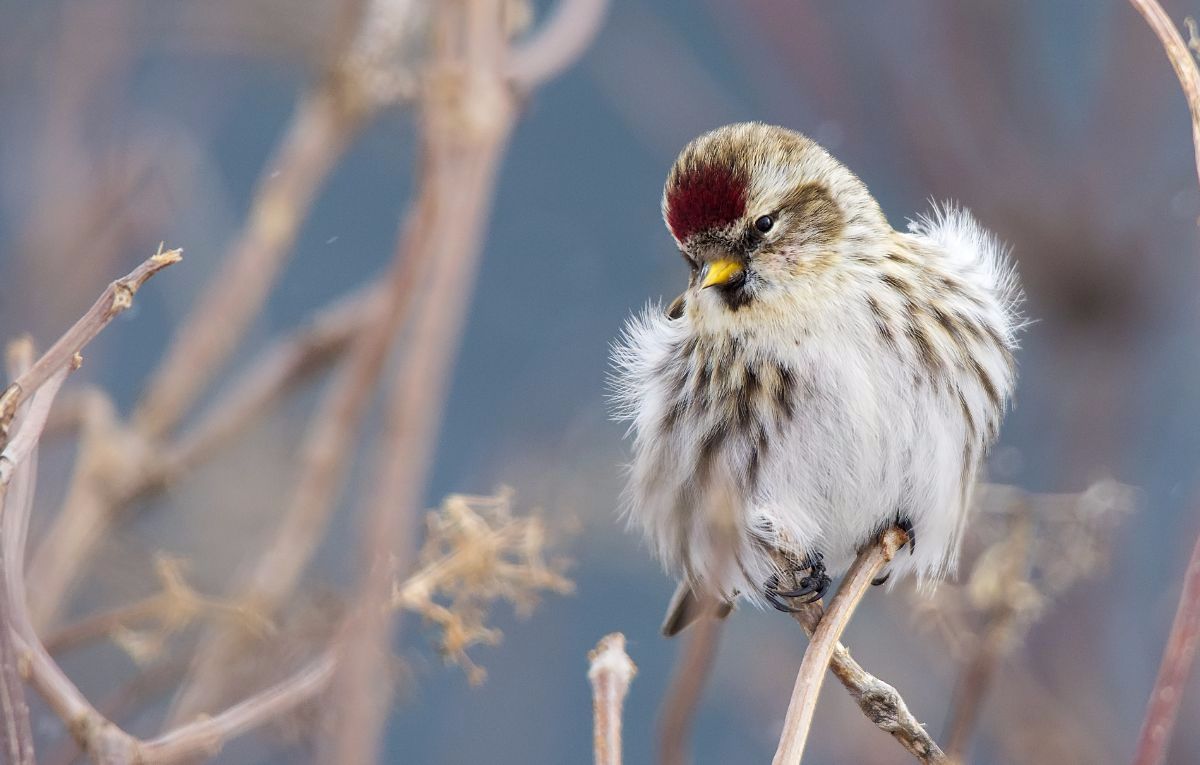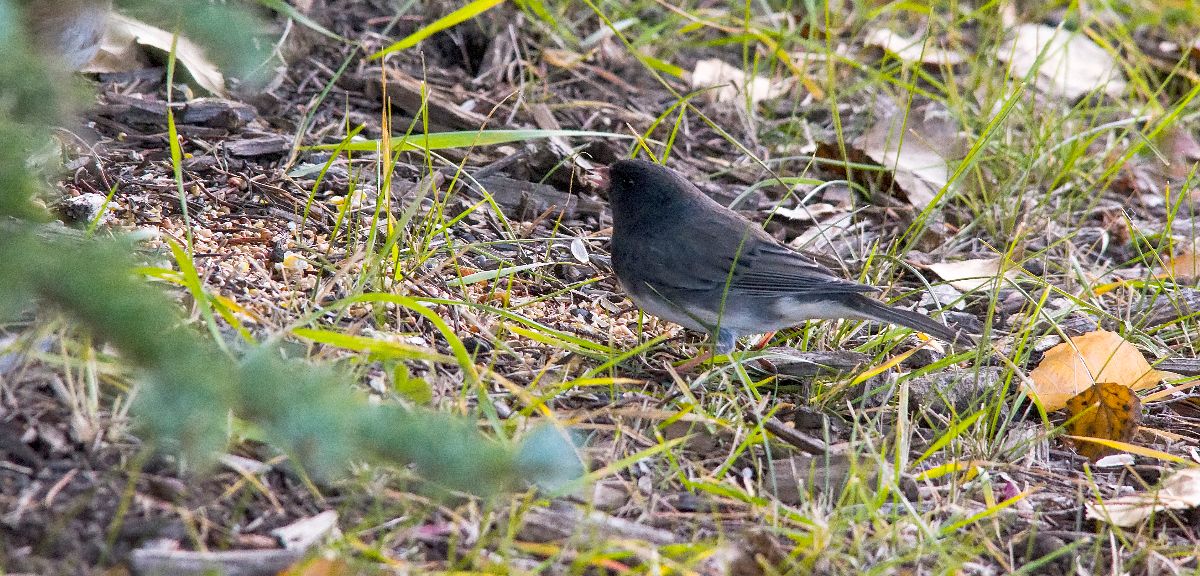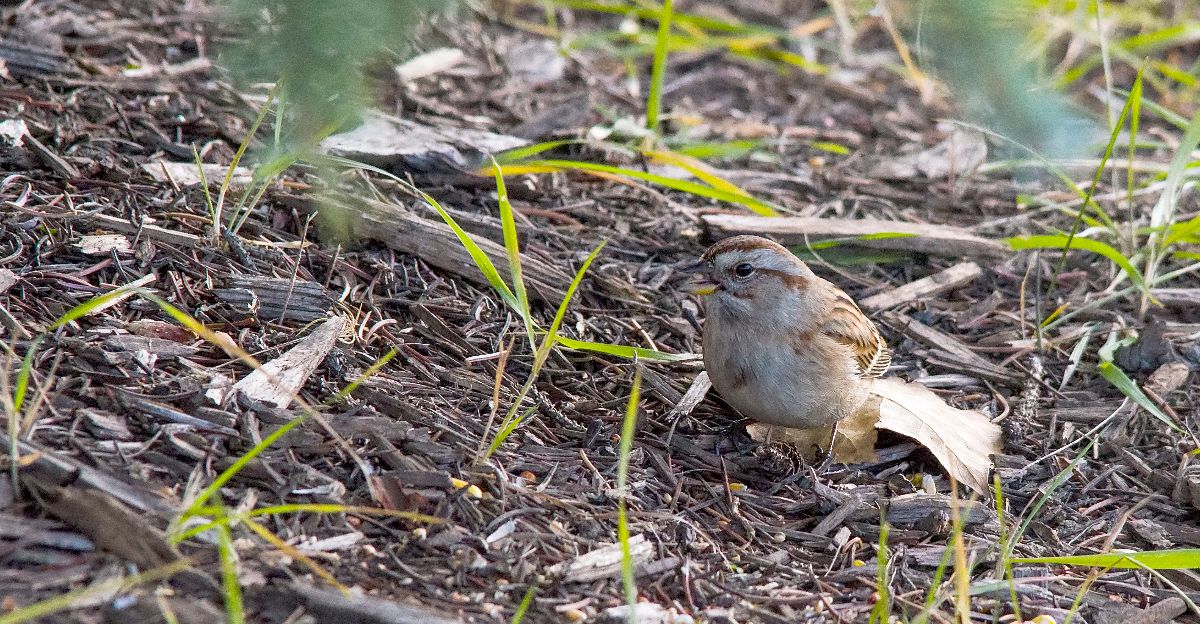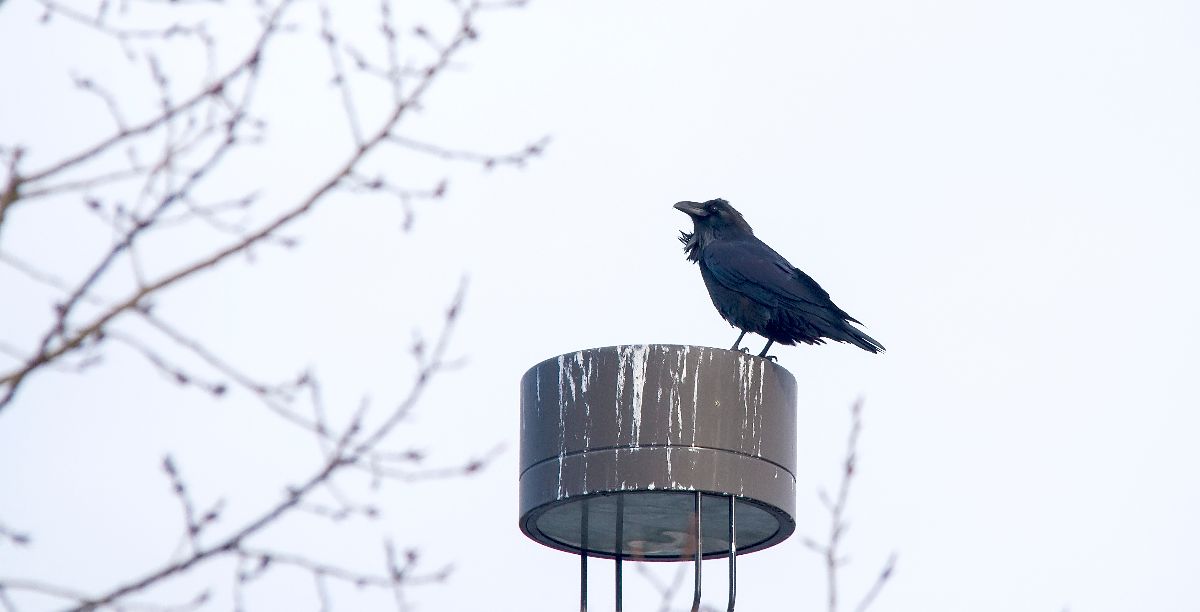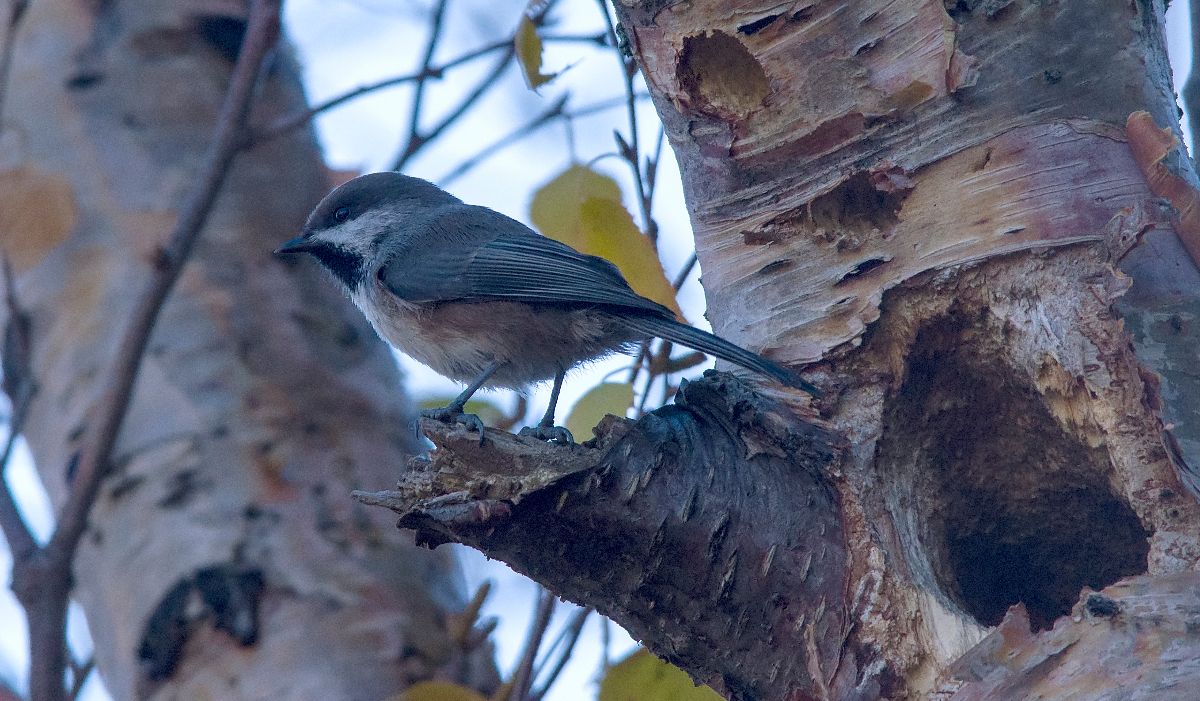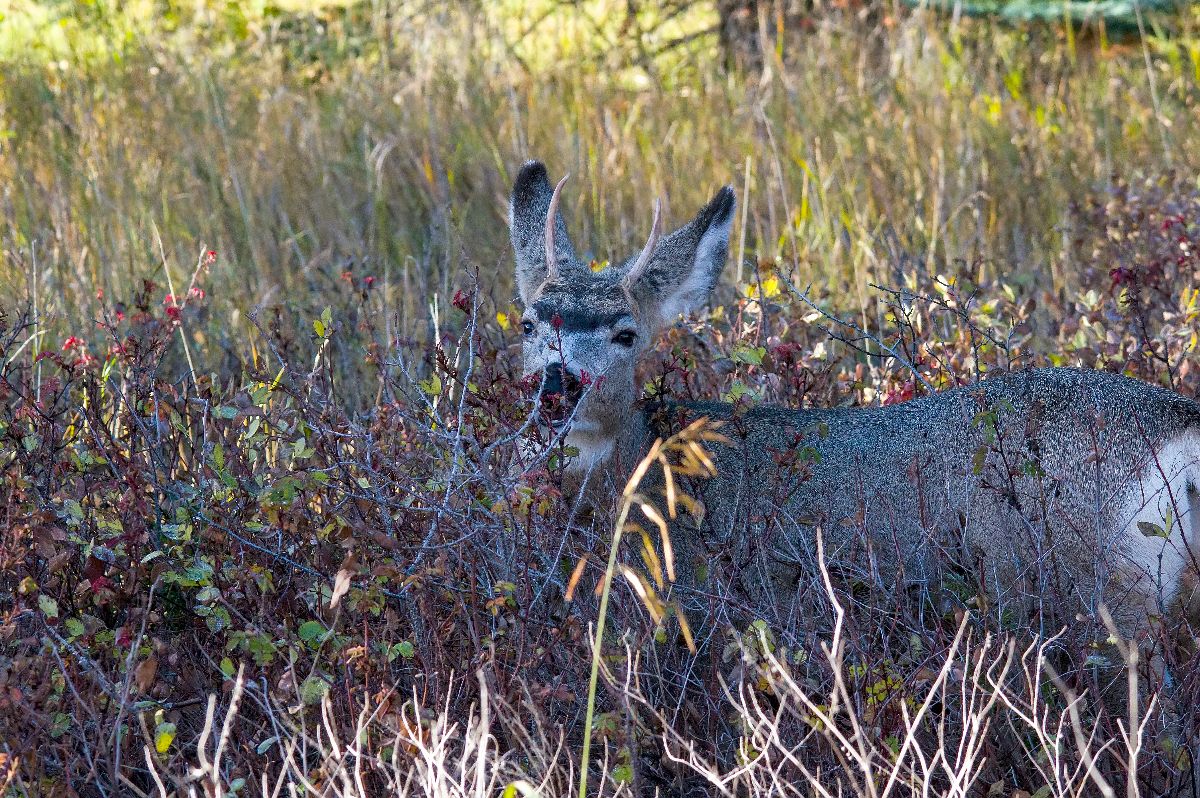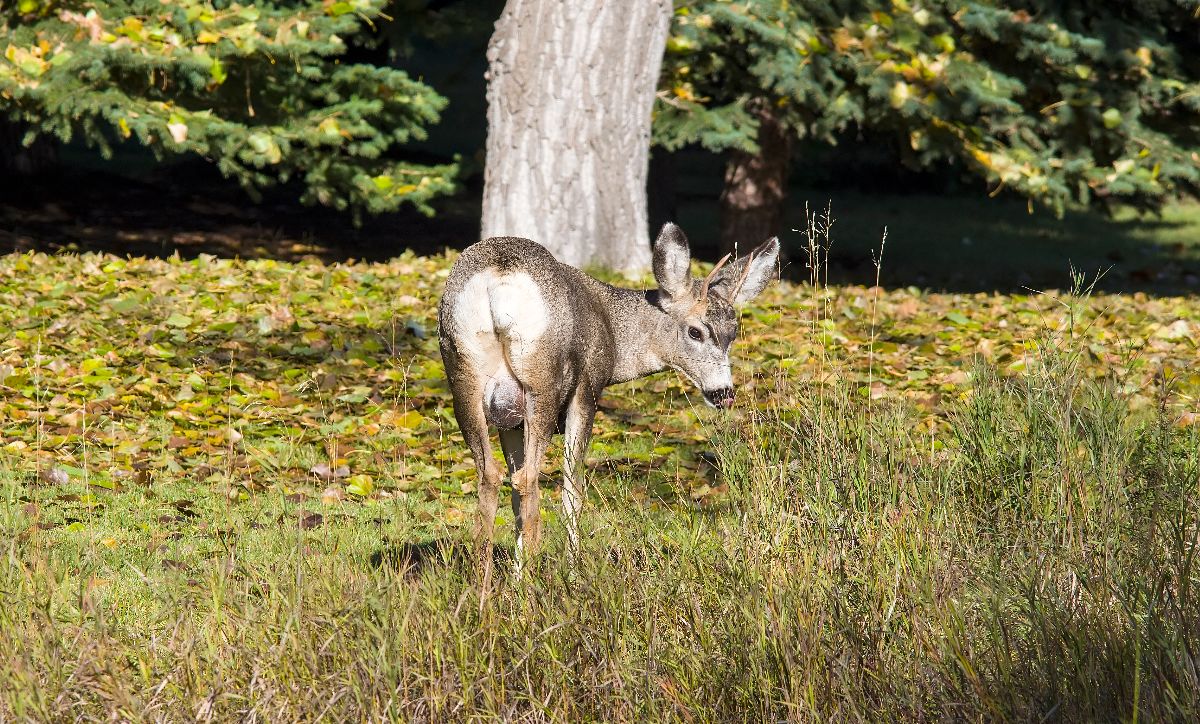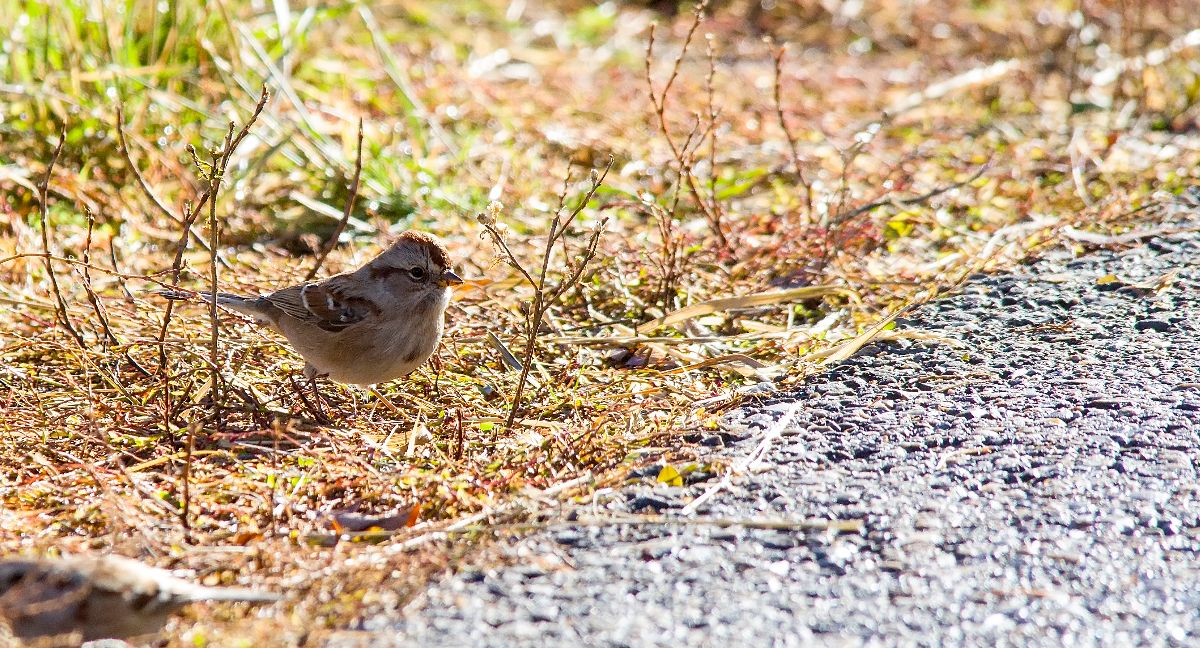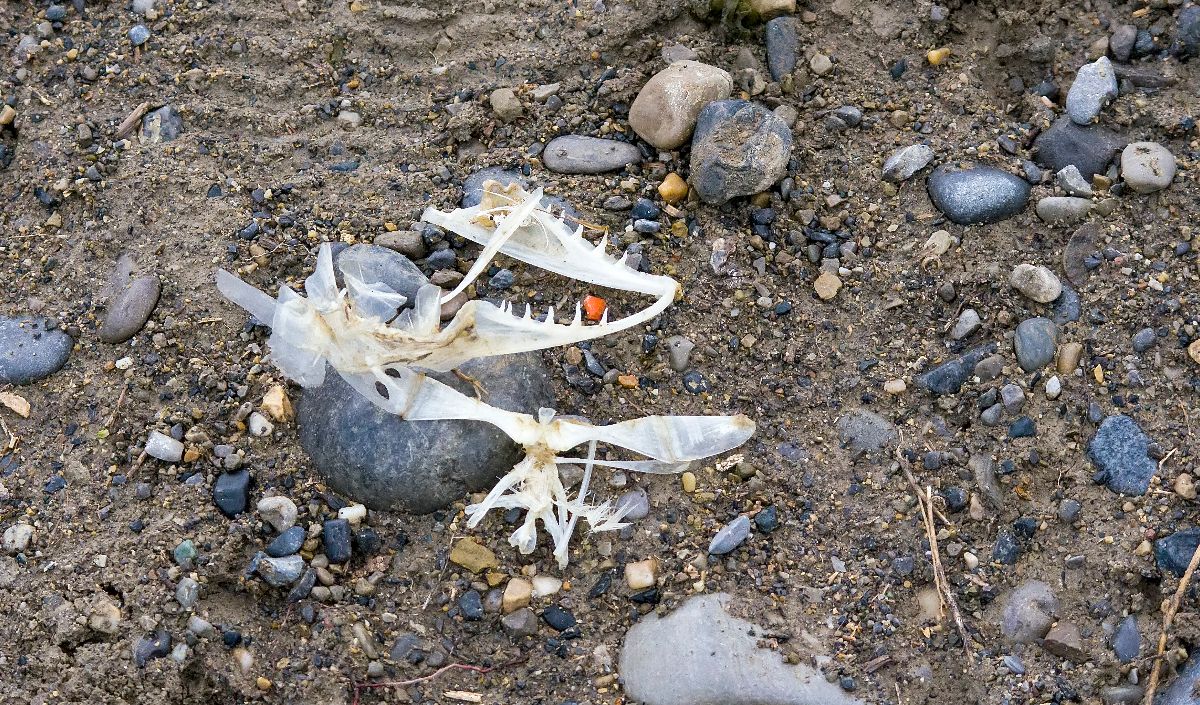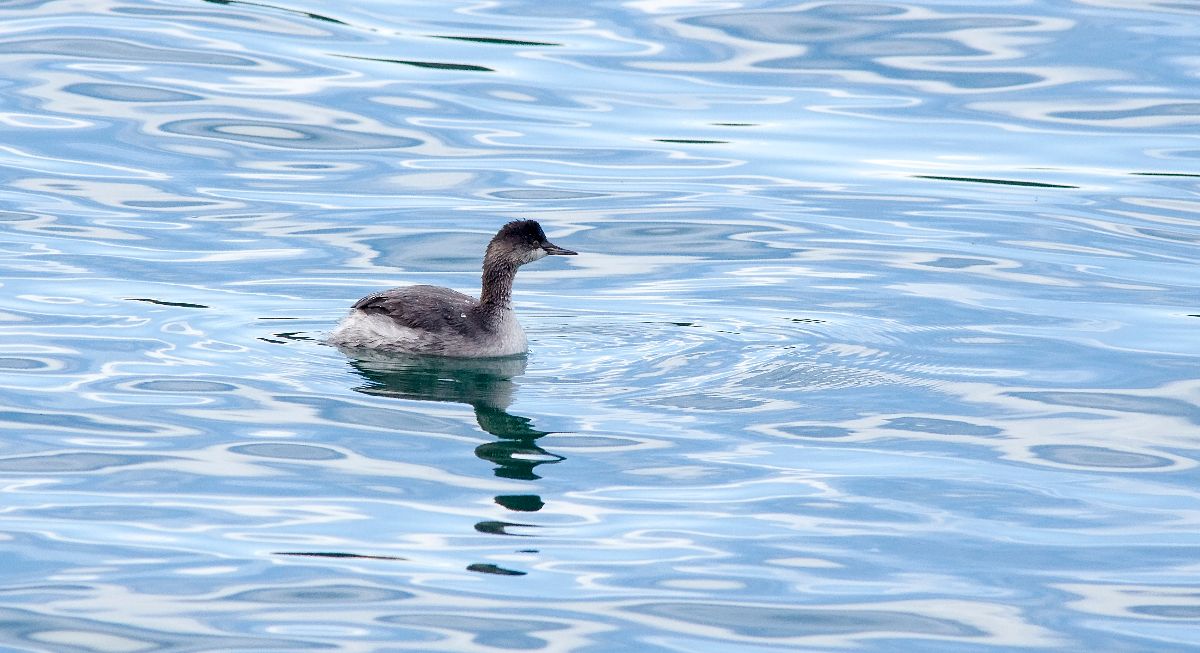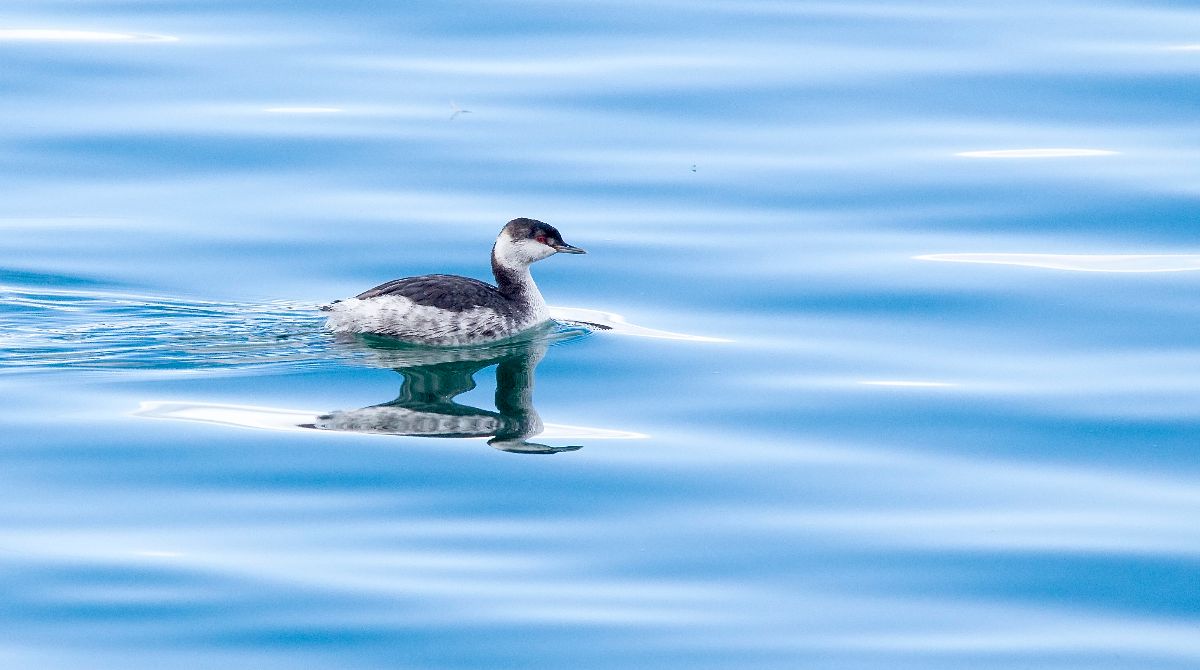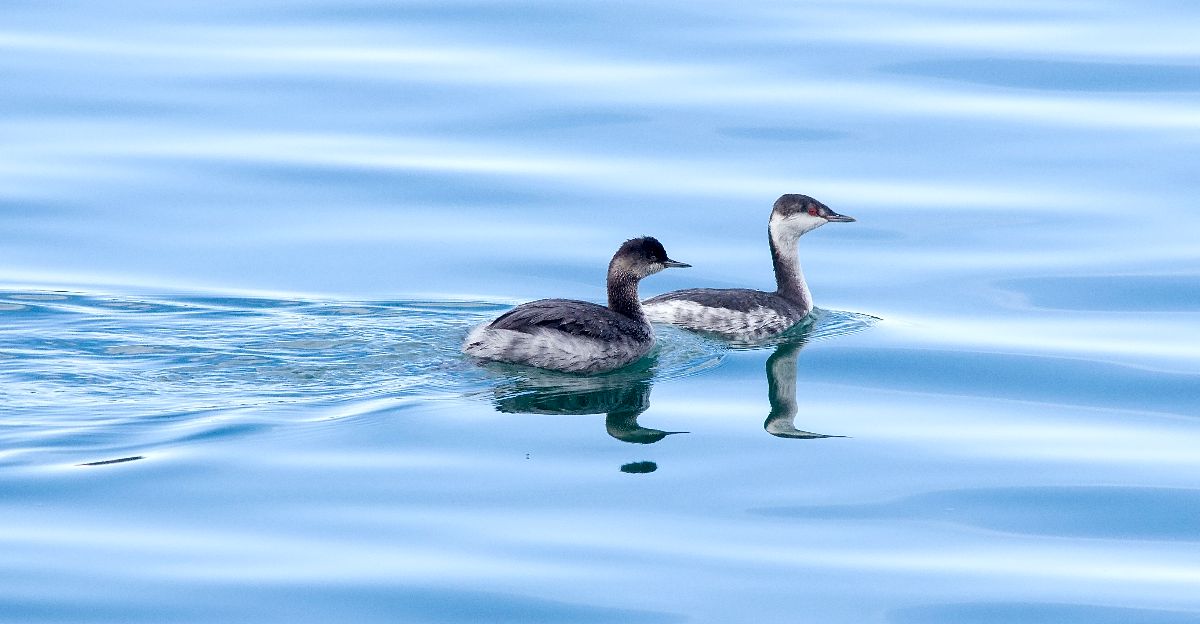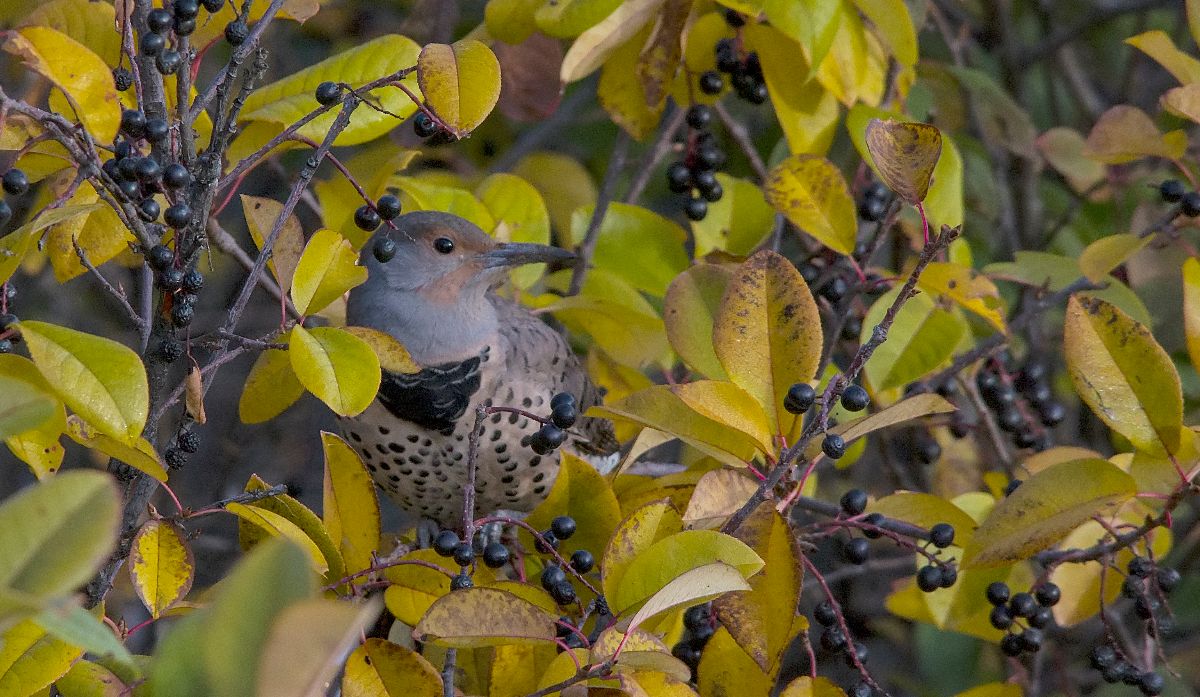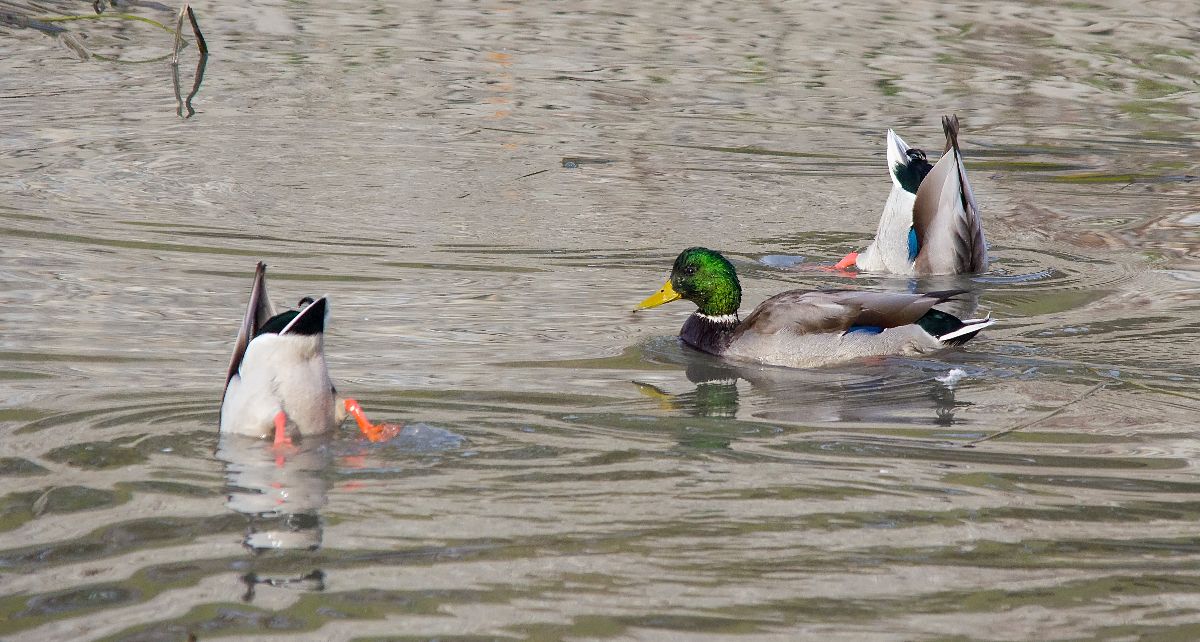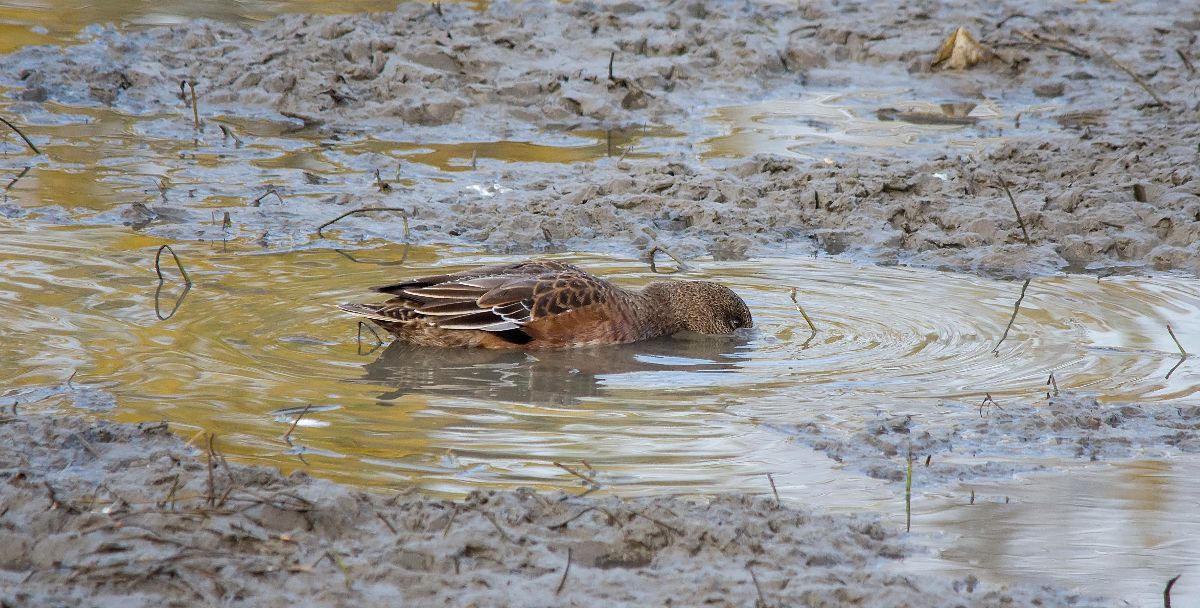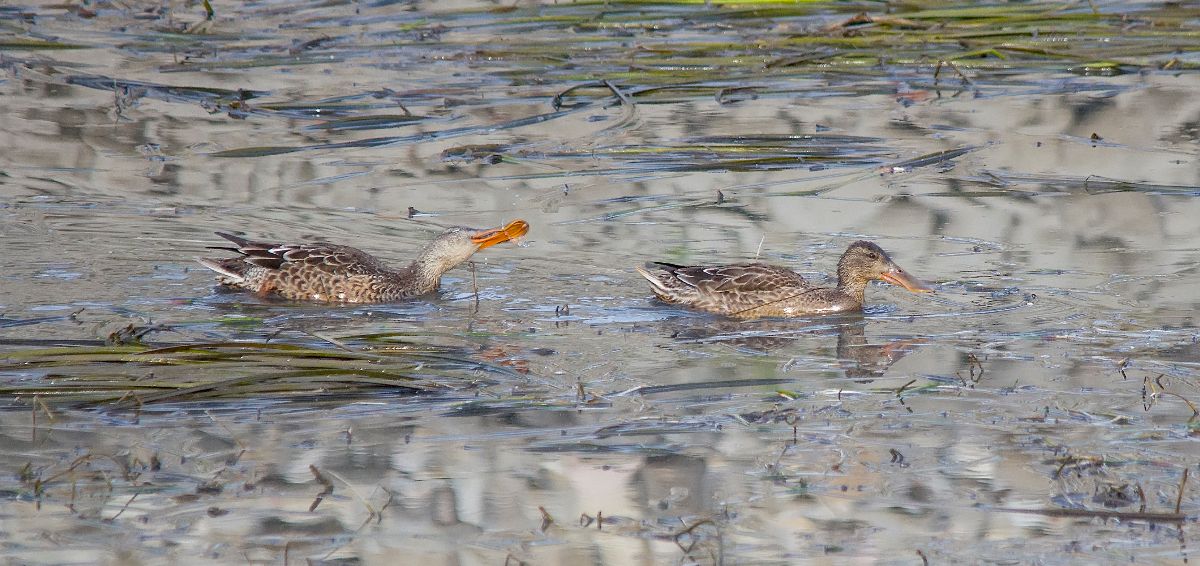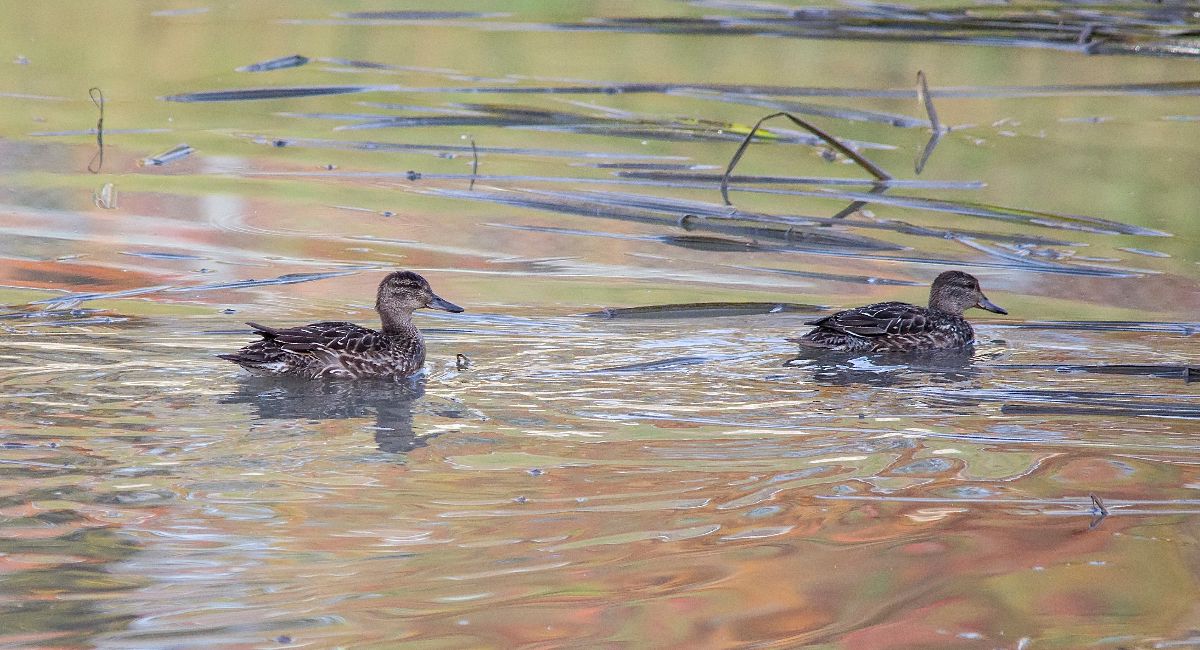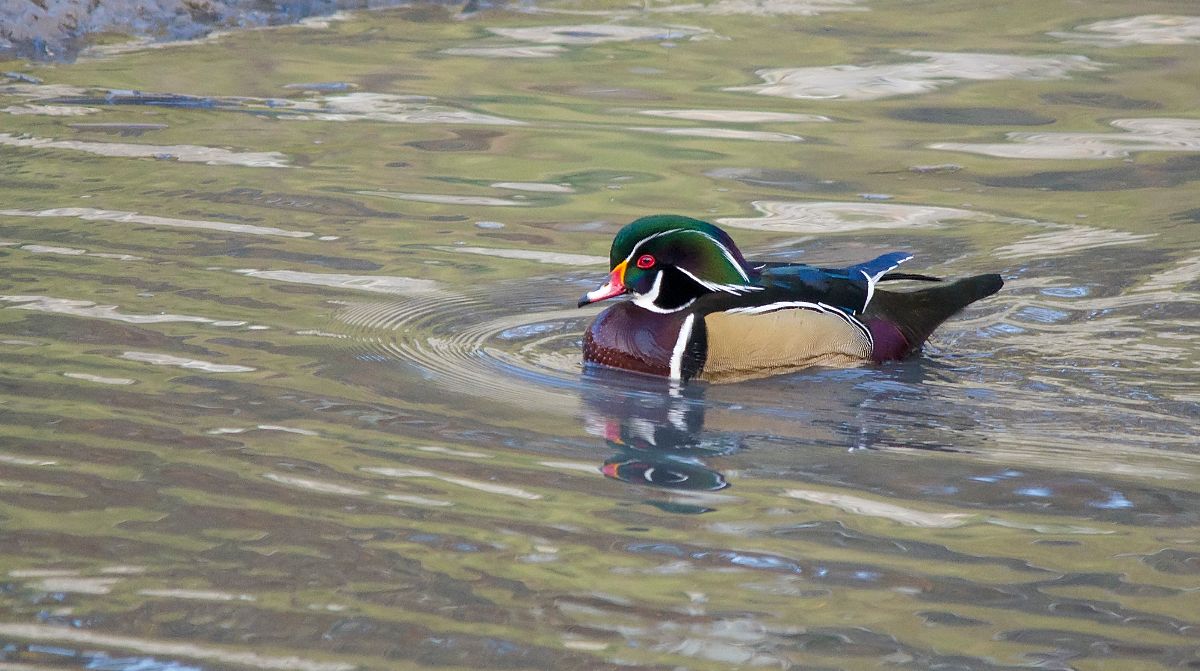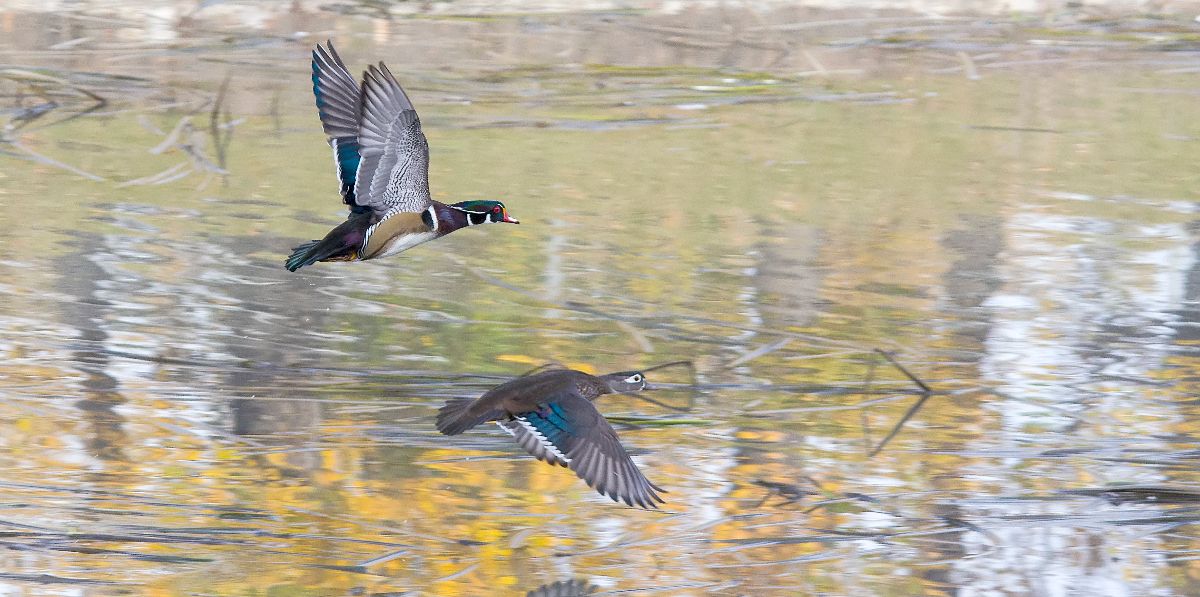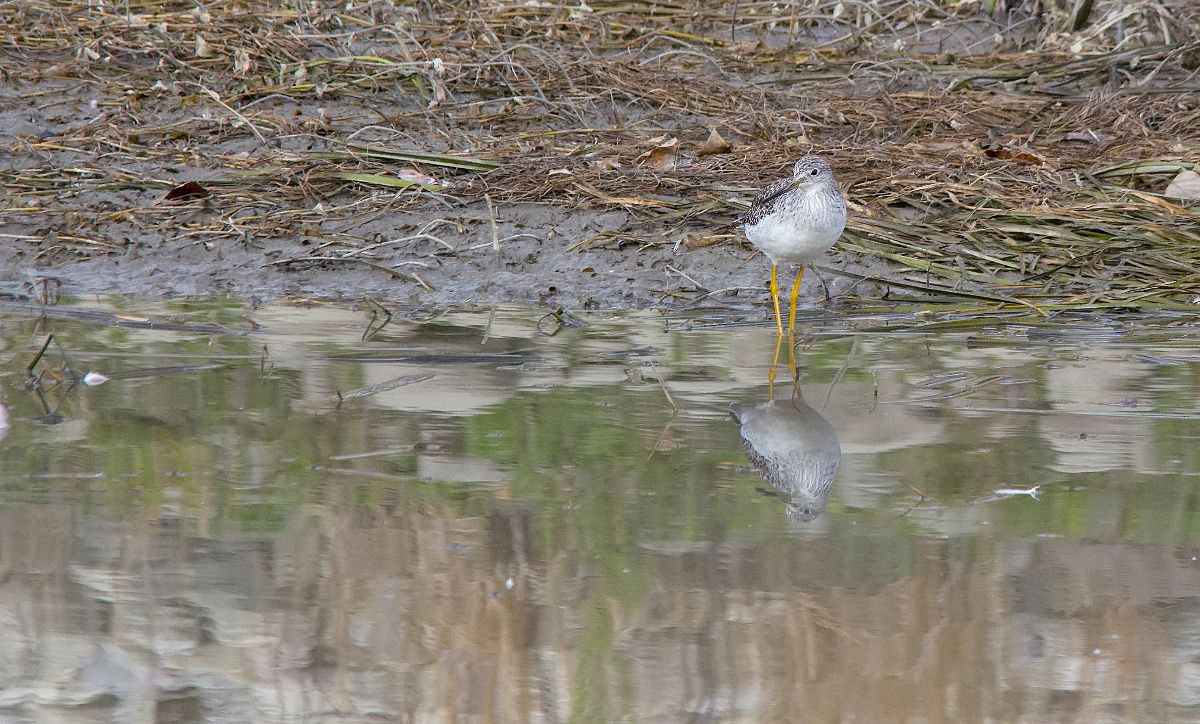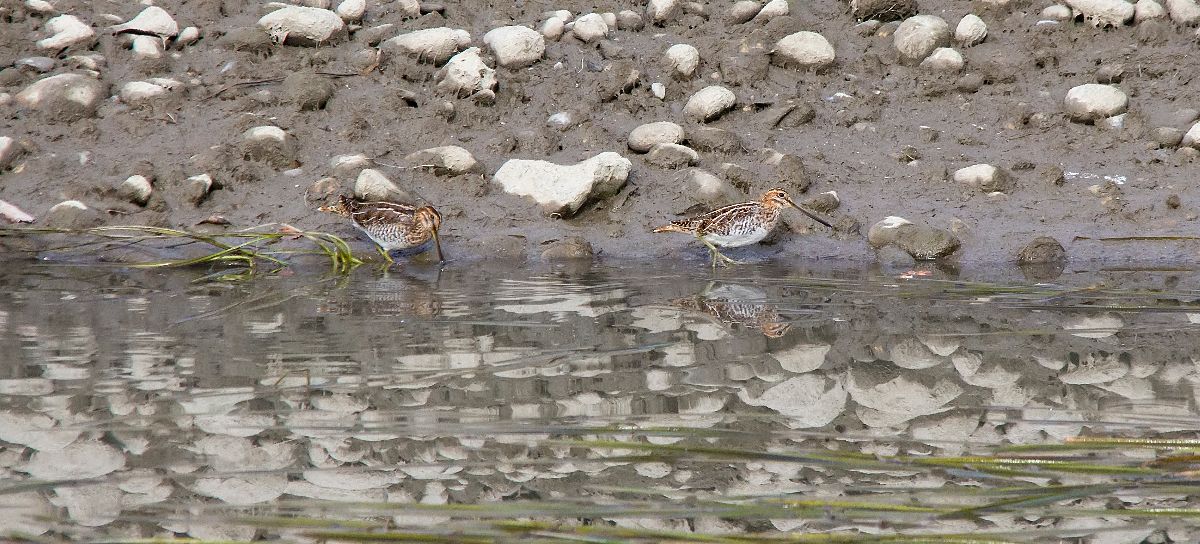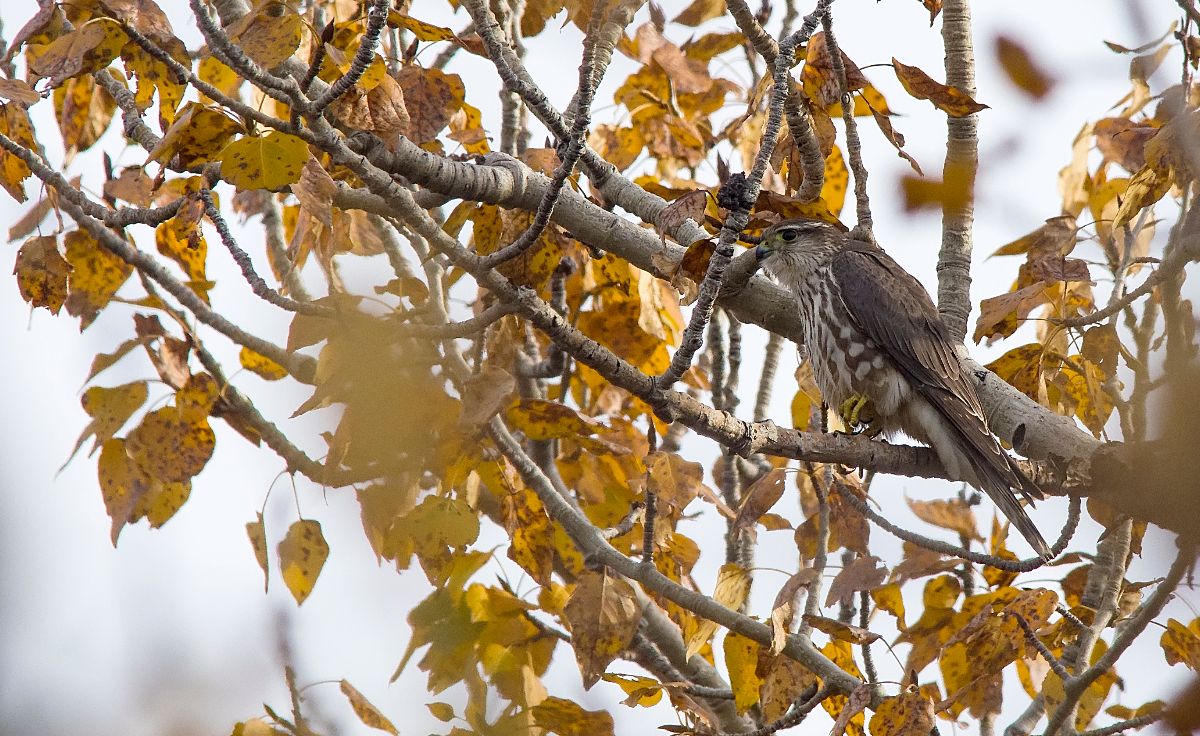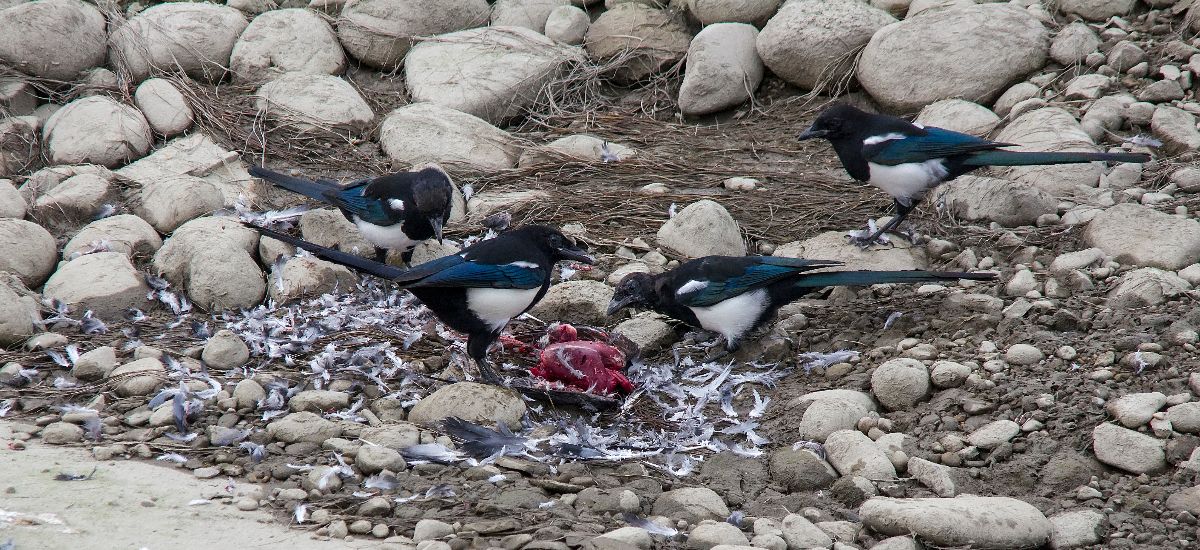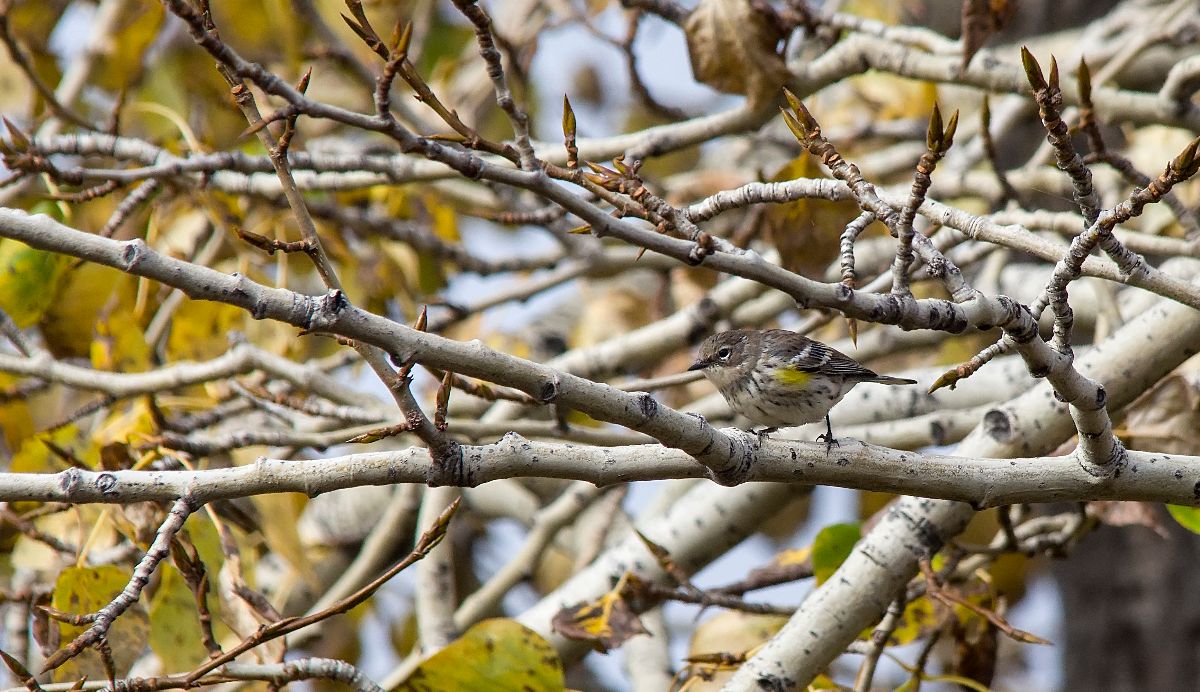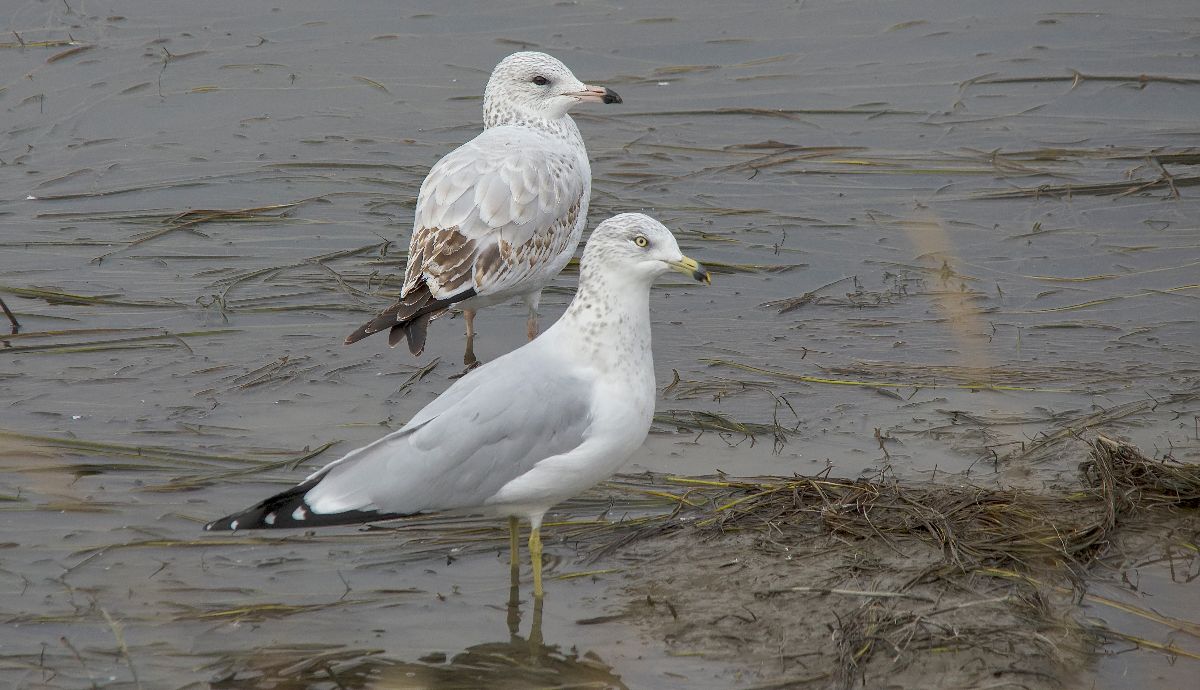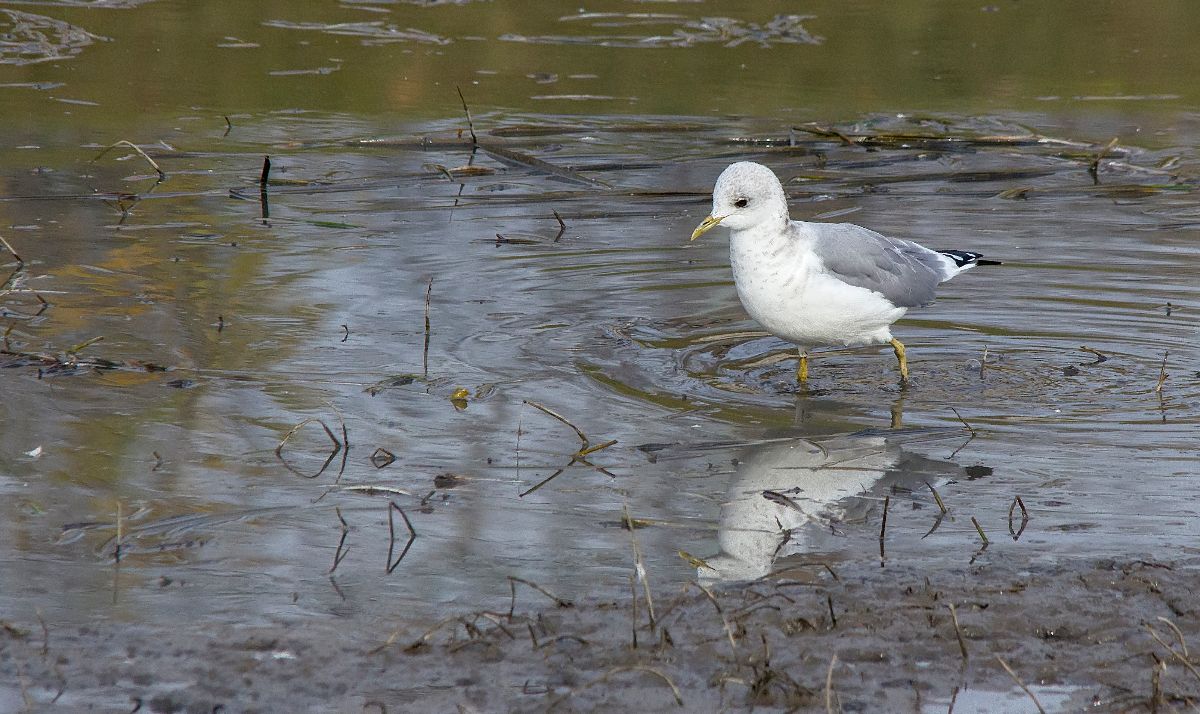Posted by Bob Lefebvre
The spectacular crow-sized Pileated Woodpecker is always a treat to see, and they are not very shy birds, so occasionally you can get great close-up looks at them. They are not common in Calgary. Look for them in three areas: Around the Glenmore Reservoir, including the Weaselhead, and upstream on the Elbow River through Griffith Woods Park; The west end of Fish Creek Park; The east end of Fish Creek Park on the Bow River, and north on the river as far as Carburn Park. They are year-round residents here, so look for them any time you are out in these parks. If you live near these areas you may also get them coming to suet or nut feeders occasionally.
All photos by Tony LePrieur.

Pileated Woodpecker (male), Bebo Grove, Fish Creek Park, December 4, 2016.
In the above photo you can see the distinctive rectangular hole that these birds make when feeding. They eat Carpenter Ants, which often infest large trees and deadfall. If you see a fresh hole like this, often near the base of a large tree, you will know you are in a Pileated Woodpecker’s territory.

Female Pileated Woodpecker, Bebo Grove, Fish Creek Park, December 4, 2016.
The female above (likely the mate of the male in the first photo) is distinguished from the male by the black stripe from the bill to the throat, which is red in males. In addition, the red crest does not extend all the way to the front of the head on the female as it does on the male.
The nest hole of a Pileated Woodpecker is a large oval, usually high in a dead tree, or occasionally in a power pole (as seen in Griffith Woods Park). The male will make a new nest hole each year.
Below are more of Tony’s photos of Pileated Woodpeckers in Calgary.

Pileated Woodpecker (female), Fish Creek Park, January 31, 2016.
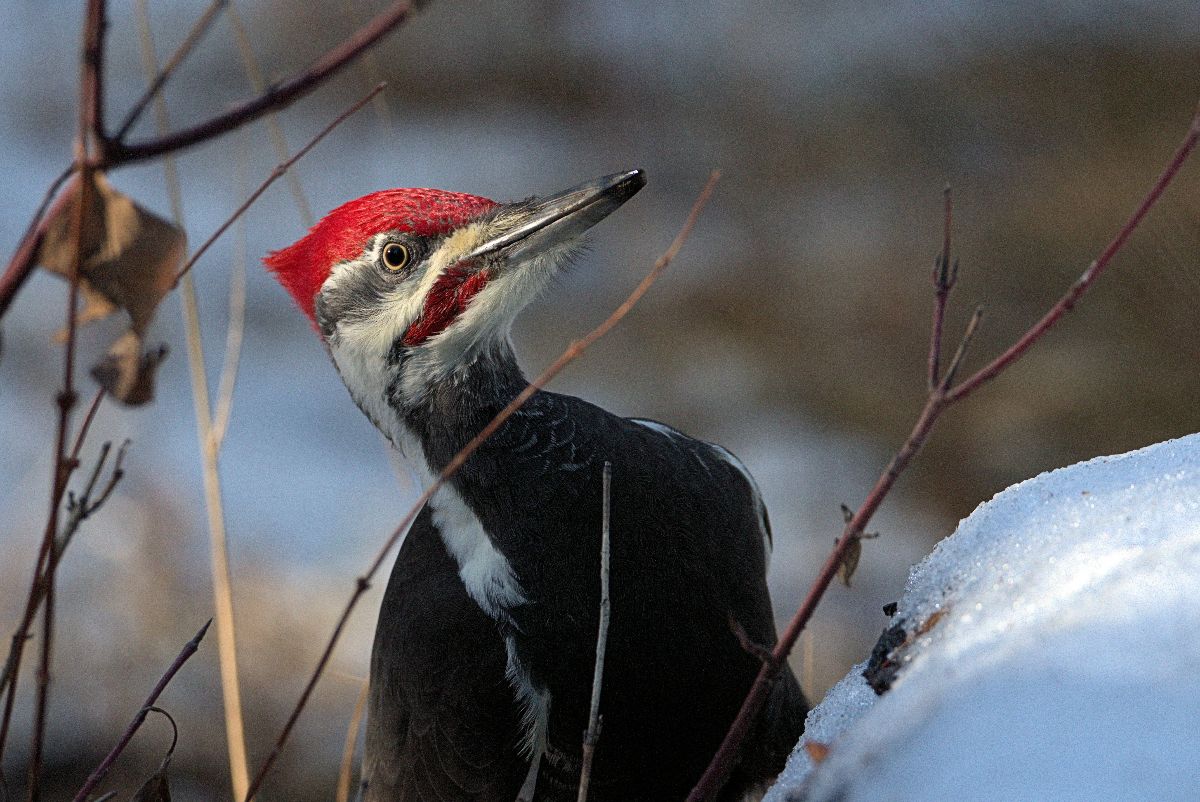
Pileated Woodpecker (male), Fish Creek Park, November 26, 2015.
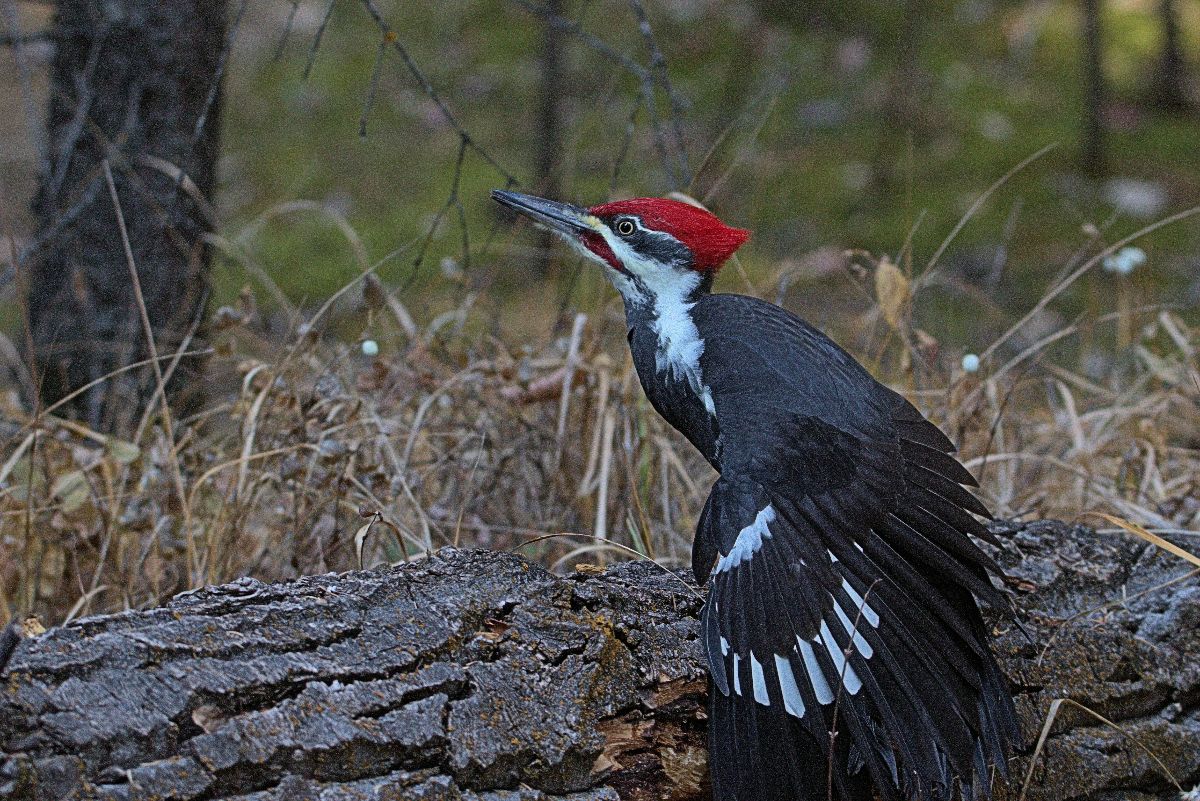
Pileated Woodpecker (male), Fish Creek Park, October 25, 2015.
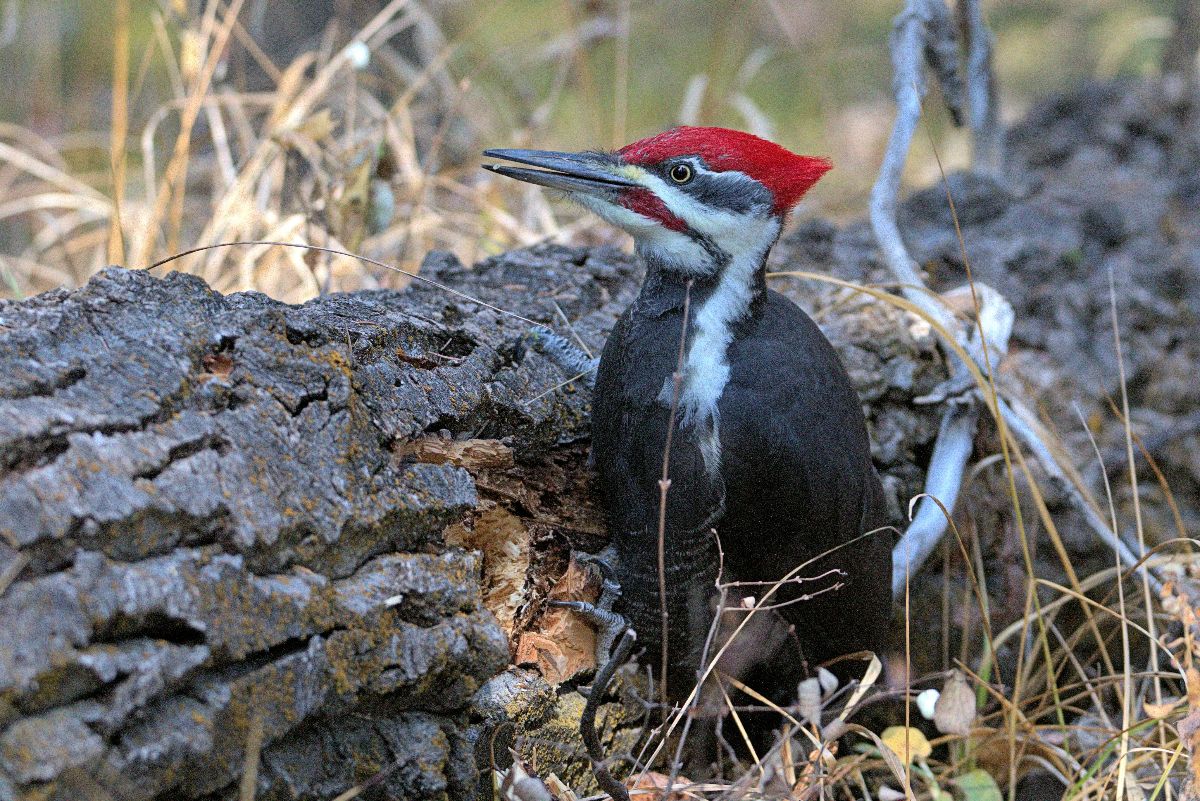
Pileated Woodpecker (male), Fish Creek Park, October 25, 2015.
For more photos of Pileated Woodpeckers see these posts.
You can see more of Tony LePrieur’s photos on his Flickr Page here.
